#Constantly in adaptations pretty consistently in or has a comic.
Text
I do think the wildest part of the Skyrocket/Connie concept is that Visaggio seemed to legitimately believe that Kon-El is like... a D-List superhero. Which is just like, a wild thing to believe considering the Comic Kon won in a fan poll hadn't even finished coming out at the time she pitched her idea.
#dc comics#dccomics#superboy#kon el#Like if she was maybe 15 years younger I'd get it? Because that'd be growing up on 2010s comics where Kon didn't have a book for most of it#But like Kon was in books during the 90s. He was in books during the 2000s. He was in books until like 2014?#And then he came back in 2019 and got a book again.#Kon's at worst a lower c-tier character but probably more like upper C-tier?#Constantly in adaptations pretty consistently in or has a comic.#The big periods where Kon hasn't been in comics is like 'Kon was killed because of stuff happening in editorial or on a corporate level'#Like it's from 2006 to 2009 (dead) and then 2014-2019 (Dead + weird N52 stuff).#Arguably Kon was sort of not in comics between the end of Bendis YJ and then YJDC... But he did have appearances.#Also there were like 8 events during that time and frankly Suicide Squad was using Match which I'll count.#Kon doesn't always have a solo book but he tends to have one more often than lots of other characters.#Even when not in a solo he still tends to be in team or Superman books.#Will add that I don't oppose Kon being trans conceptually and I've given my thoughts on that specific outline for a story before.#I just think in future check that a character is a D-list character before deciding to do a massive reinvention
17 notes
·
View notes
Text
It’s so funny when people are like ‘superhero comics don’t sell because they’re too leftist’ (comics have leaned left from the beginning, often not radically so and they still don’t, but yeah,that’s what happens when most of the writers from New York) rather than like, the much more obvious reasons of constant reboots and being unable to read any one story without either buying a million comics or spending hours on wikis because of all the crossovers and constant shifting timelines.
The reason manga is selling better is because when you pick up my hero academia or yona of the dawn or something, you get the whole story and it’s consistent and able to build on it’s characters. Even if it ends up being a million volumes, you don’t need a dedicated research team to figure out the story, and even if it ends up being consistently mediocre like my hero academia you can still follow along pretty easily and won’t have to worry about the character suddenly being erased from the story or becoming unrecognizable because of a crossover in some other title. or the writer changing halfway through, or a new company wide initiative. The artists have a little more freedom to tell the complete story they want to tell, to actually pull off a good ending or plot twist that won’t be undone in a few years, there’s usually just one main editor, and they also have anime adaptations to hype them up that are much more similar to the source material than marvel/dc movies are to comics and simpler to get into.Also they’re less expensive. Manga is just more accessible, especially to kids.
It’s just a solid business model (though it has it’s own problems, mainly the endless greed and enforced overwork from those at the top), while comics run around in circles with constantly changing editors and writers and making snap business decisions. Like isn’t that obviously the culprit here? It’s not rocket science.
#I know exactly why I burned out on comics and it was definitely not about being leftist#but actually the inexplicable nostalgia that causes them to constantly trash characters#that weren't around in the 60s#comics#manga
302 notes
·
View notes
Text
So I noticed a few people have been following me bc a couple artist friends of mine have been drawing my Swap Pap, Gale (love you @flamingbiscuit @a-snowpoff and @mmhinman [who drew the ref below]) so I’ll post some information about my boy here, for those of you wishing to know more about him.
I’ll be including some general HCs about him, as well as his backstory below the cut (though it’s currently very much a work in progress). I hope you enjoy ^^
TW for Gale’s backstory include no-mercy run mentions, death, and mourning/grief.

HCs
He has a humming stim. He constantly listening to many different songs from different genres, and while there’s no real consistency between them, one thing they’ll have in common is that they’ll stick in his head for hours. As a result, his Undyne started to refer to him as a Nightingale. Gale for short, hence his nickname.
He works as a software programmer full-time, so he has some cash to burn. He also runs a side YouTube channel where he teaches kids how to code. He enjoys being entertaining to kids, and while he likes them just fine, he’s probably in need of a babysitting lesson or two.
He has a number of stims outside of humming. He has chew necklaces for his chewing stim and it a notorious pen clicker. Also leg bouncing. Lots of leg bouncing.
He's not normally very athletic and is even a bit too indoorsy, but he really enjoys swimming. Something about just letting himself drift in nice, cool water he finds soothing. If he lived by a large body of water he would also enjoy paddle boarding and kayaking.
He owns a bearded dragon named Mush (also called “Mushy” or in some cases “Mushymushymushy”). Gale bought a nice large terrarium full of all the needs for his little friend and keeps them plenty happy. Mush will often rest on Gale’s shoulder while he works.
His love language is physical affection. He'll stop if you want, but if you let him, he's going to reach out at every opportunity. Rub your hand while you hold his, snuggle up on the couch (platonic or romantic, he’s down wither way), lazily fiddle with your hair, etc.. He also tends to lean into the people he likes when he laughs.
He does origami as a hobby. Paper folding was also a stim for him and he decided "heck, I'll do something artistic as shit with this" and he took it up pretty easily.
His absolute favorite food is gnocchi. It's pasta in a cute little bug-shaped package and they're fun to chew.
He does little Mandela designs in his notebook just as doodles, not really seriously.
He enjoys comically bad movies as well as romcoms. He also prefers movies that are more focused on the characters than the plot, though will make an exception if the comedy is especially well done.
He's a bit of a gamer, but only really enjoys single player games. He specifically prefers smaller indie platformers like hollow knight, shovel knight, etc..
He’s got a very relaxed attitude, which he often expresses through mischief and playing ignorant. He is very off-the-cuff when it comes to how he interacts with people, and will often say whatever first pops into his head, for better or worse.
He wears his emotions on his sleeve, and if he’s upset about something chances are you’ll know right away. He’s usually a pretty happy guy, but when the mood shifts, it’s almost a complete 180.
He highly values honesty, and would rather someone be blunt with him than try to spare his feelings. He’s not a fan of being given flowery words or people dancing around an issue for his sake.
That said, he does still try to emotionally connect with people who are having a rough time, and will often adapt to the people around him. Need cheering up? He’s a great distraction. Need a shoulder to cry on? He’ll comfort you all night. He’s not the best with words, but he’ll do what he can to put smiles on his friend’s faces.
Backstory
Gale’s Underswap is much like any normal Underswap in the begginning. He was raised by his older brother (his swap sans), who is training to be a royal guard and to be the hero his little brother always thought of him as. The two grew up in Snowdin, though Gale would often leave town to explore the dump and find new tech to tinker with. That’s where he met his Undyne, and the two would often talk about their experiments over Undernet. Gale is very close with Undyne, and considers her his best friend.
This peaceful, happy life is interrupted with the arrival of Chara. In this particular Swap AU, Chara begins to a no mercy run, makes it through Snowdin and finally reaches the border to Waterfall. Gale has decided to step in after seeing the disaster the human had caused, and he rushes in recklessly, hoping to stop them before they can reach Undyne and the other Waterfall monsters. Gale has decent HP and attack, and he figures that if Chara took a swing at him, he could tank it and knock them down in one blow.
He doesn’t know just how futile that would be.
The fight commences, both dodging each other’s attacks. Chara seems to predict Gale’s attacks, and dodges them easily. They wear Gale down, until he’s out of breath, and at their mercy. Chara swings their weapon one last time, but before they can hit Gale
Sans throws himself between them, reducing his HP to zero.
Gale watched Sans die in front of him, and being frozen, he just. Sits there. Shaking. Unable to move. It’s then that Chara snaps out of their trance. They realize what they’ve been doing. What hurt they’ve been causing. They try to reach out to Gale, but before they can touch him, he teleports away in panic. After this, Chara starts sparing monsters, effectively being a pacifist from this point. Eventually, Chara defeats Toriel, and they leave the Underground, seemingly to never be heard from again.
Gale, grief-stricken, moves in with Undyne. He helps Undyne with her experiments, and learns to code in order to earn his keep. He starts seeing a therapist through Undyne's encouragement, which helps a bit, but he never quite goes back to normal. He does eventually get used to masking his sadness, using his humor to get genuine laughs from his jokes and divert attention away from the things he’s not ready to talk about. With his brother and lifeline gone, he's also a lot more dependent on the people around him now. It's something he has to grow past.
3 years after Chara’s initial fall, another human falls, and is handed over to Captain of the Guard Alphys. Working with the human, she crosses the barrier. Undyne and Gale eagerly await news, and finally, after months, she returns with the seven souls needed to break the barrier. “Volunteers” she found. Chara included.
With this second chance being the kick in the pants he needs, Gale decides to move out of Undyne's, stop mooching, and build the better life his brother always wanted for him. It takes a lot of work, and those scars still run deep, but he's doing better for himself and actively working hard to better his life, as well as the lives of other monsters affected by the human.
It helps him sleep at night. Maybe one day it'll be more than just coping.
#undertale#underswap#Underswap Papyrus#Gale#My OC#Dusky's OC#tw death#tw mourning#tw no mercy run#tw genocide run#I wrote all this at like 5 AM I'm sorry for any incoherence uhfidjoskjfhuj
611 notes
·
View notes
Text
In hindsight I really hate this change...


Gou/Sotsu is about about Satoko hurting Rika the same way she was hurt at St. Lucia because she felt lied to and isolated and she wanted Rika to feel that (it's literally the gay situationship of all time, the messiest "what are we?"), but it's also about Satoko forcing Rika to return to the trauma for the sake of making her return to the self that she once knew because their lives have been defined by a trauma that Satoko is still incapable of leaving behind, and the destinction here is very important because in Satoko's mind there's a line between St. Lucia!Rika and Hinamizawa!Rika that feeds into this betrayal she ends up feeling and makes her feel like everything about the latter has always been a lie.
It's very interesting to me because Satoko gets so angry, hurt, and betrayed by Rika for lying to her twice and over the course of the show comes to realize that Rika has just been lying to her face without a second thought for the entirety of their shared lives by living through her loops, and I really appreciate Gou/Sotsu for acknowledging this side of Rika - that her relationships are filled with dishonesty and how she's almost never been truthful even with the closest person to her, Satoko. The original story was more about everyone coming together to support Rika and what they meant to her. She was the central figure. Changing the perspective to that of Satoko's completely flips the dynamic on its head, and it really feels like Ryukishi applying what he learned from writing Umineko to Higurashi in emphasizing how people can hurt each other even when they deeply love one another. Rika has always been a jerk, but since we're in her head in the original and we understand why she is the way she is, this side of her doesn't really click until we observe it from Satoko's perspective.
Meguri making it into a generic line about Satoko knowing that Rika is just 'adapting' feels like an effort to make the characters as flawless as possible, which later on becomes a big issue with this manga where the entire conflict at St. Lucia is predicated more on Rika's friends coming between them rather than Satoko and Rika having any flaws that lead to the miscommunication + Eua bullying Satoko into becoming a witch by taking away her agency and forcing ridiculous bad ends that say nothing about the characters instead of letting Satoko make her own questionable choices due to personal flaws while having Eua subtly manipulate her (which really rubs me the wrong way because a lot of people will only recognize the abuse happening when it's presented in the most comical way imaginable even though Eua is constantly doing that to Satoko in the anime in a much more compelling way, it’s just less overt and doesn’t fully take Satoko’s agency away).
Anyway there's a reason after living through Rika's loops Satoko comes back being like "Rika doesn't care about me, only the possibility of leaving" because on top of living through Rika's trauma and worse she just witnessed Rika lying to her about everything. She found out that everything about the girl she's always loved and gave up her childhood for twice is a lie.
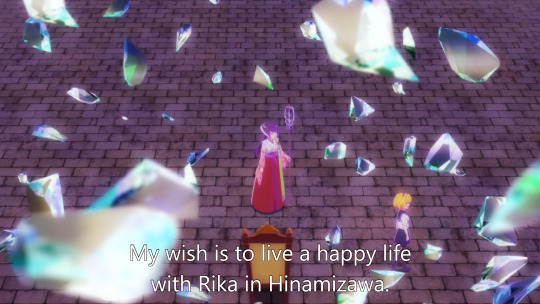

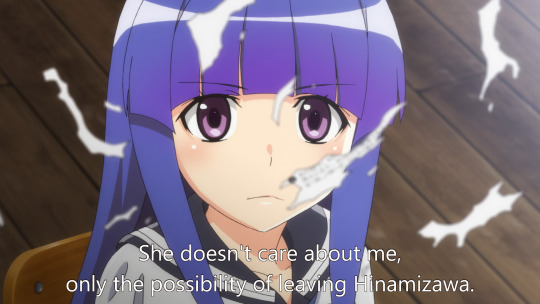

And the disembowelment scene is pretty explicit about how Satoko comes to believe that the days Rika spent in Hinamizawa with her meant nothing and how this has been a source of huge torment for her.
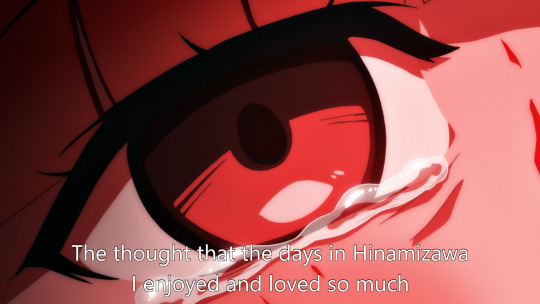
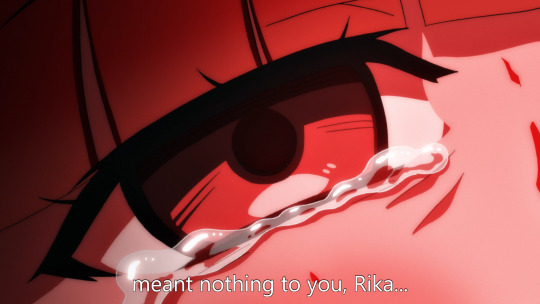

This is me @ Satoko when I see her being done dirty by this manga take btw...

The reason I keep saying Meguri is bad and Gou/Sotsu is good is because Meguri very much feels like a Gou/Sotsu written by someone who, in Umineko terms, doesn't 'understand' Satoko's heart. Gou/Sotsu Satoko just feels more consistent and truer to her original VN self to me, and when the manga is too focused on softening her edges and cutting any aspects of her that make her 'unpalatable', it’s Tomato neglecting the heart in my eyes and the depiction ends up being very shallow.
Higurashi and WTC as a whole are one of the most real depictions of abused and mentally ill children ever because it never paints them as monsters, but it's also not afraid to show them being “ugly”. Gou/Sotsu lets Satoko express this ugliness while Meguri doesn’t. I’m not going to talk about how it has the most blatant and worst case of child sexualization in the entire series which is especially bad when Gou/Sotsu and WTC as a whole have been making conscious effort to move away from this. In main story stuff at least. But that's very bad because sexualizing Satoko during the arc about her abuse makes it irredeemable to me and that’s not something the VN ever does. It has some tasteless jokes but it never fetishizes the girls’ trauma.
Anyway that Willard screenshot is also integral to how I engage with media analysis. Every piece of media is a witch's game and I'm the Battler/Willard trying to ‘solve’ it by approaching it in good faith.
60 notes
·
View notes
Note
*screams about heartstopper*
like literally i dont think any one piece of media has ever made me so joyful! It just just so beautiful. Visually its so pretty, thematically it toes (tows?) the line of realistic and comforting really well (at least for me), the acting is incredible - especially considering the age of the actors, and the constant unapolagetic queerness that is so obvoiusly written by queer people is so refreshing and just .. nice to see. Nick saying 'im bi, actually' so many times was heartwarming and - as someone who is bi themself - it was so nice to see that the only time the usual bi stereotypes were presented was through nicks anxiety (and also ben). I am so scared to see where they take nick's self worth in regards to his 'similarities' to ben bc i don't want to see him sad. I had already read the comics so it was so cool to see how effective this adaptation is continuing to be. the final few scenes of episode 6 have altered me as a human being and are like a visual form of pure nostalgia and comfort. the taylor song in there is so gorgeous. and speaking of songs the entire soundtrack was perfect (like they understand the vibe and the target audience) and had me doing the leo dicaprio pointing meme constantly. I also watched both seasons several times in the last few weeks and probably will rewatch for the rest of my life tbh. I cannot wait for the next season. anyway yea
I 100% agree I just watch this show or read the comics and I am smiling uncontrollably and just feel so warm and comforted and happy it's insane!! It's so beautiful to see something that feels so genuine and it's awkward but sweet and even seeing the changes and growth of all the characters from season 1 to season 2 feels so realistic!
Nick Nelson saying "I'm bi, actually" about seven times in S2 is literally so accurate and I felt so validated by that because it's so real (also as a fellow bisexual) to have to continually justify your sexuality depending on who you're in a relationship with. The queer rep is just wonderful and can I just say that Isaac's journey this season was one of my favourites and the way I screamed when he went back into the library and claimed the ace book at the end 🤌
Anyone who hurts Nick Nelson or makes him feel sad must endure my wrath! I want to put him in my pocket and protect him from all the sad in the world he is so sweet and caring and kind to Charlie, I hate seeing him compare himself to Ben but I love the way they showed that yes the situation was similar but he was so different because he cared about how his coming out made Charlie feel too and they literally talked and communicated, it was fucking beautiful.
And the whole hickey shenanigans from Charlie noticing it (or lbh from when Buck gave it to him) was so funny and realistic and just that episode was perfection (I'm saying this like all episodes weren't 😅)
The Taylor song scene literally did things to my heart, I felt that scene physically, and you are so right the whole soundtrack is perfect! I mean, Taylor aside you have girl in red, Conan Gray, Gabrielle Aplin, wolf Alice, Holly humberstone, Miya folick like so many more I am obsessed with the soundtrack! And have you listened to the "to Nick from Charlie" playlist based on the mixed tape from vol 1? It's literally also a vibe and has Hayley kiyoko (my beloved) and Troye Sivan (I was JUST SAYING that his blue neighbourhood album is so heartstopper coded and wild is one of the tracks 😭)
My life currently consists of:
Drive to work with heartstopper playlist
Return from work and watch reels from the show / rewatch episodes
Read more comic (trying to spread it out so I get more but I am failing)
Constantly think about all of them until I fall asleep
Repeat
I'm just obsessed and it makes me so happy like I can't even explain it, I love it so much 💕🩷💕
#i will never stop screaming#and you are literally right with everything you said like i agree 100%#scream anytime 😘#heartstopper#bekka watches things#send help
3 notes
·
View notes
Text
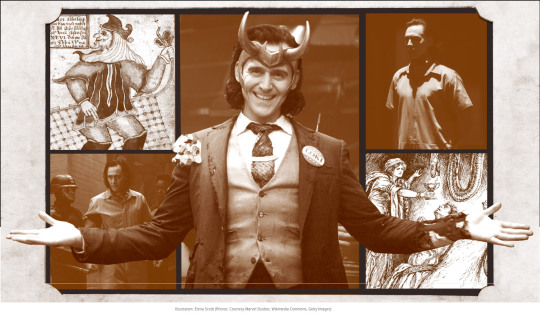
How Loki Shapeshifted From Nordic Folklore to a Marvel Icon
by Sara Durn
There are more than 800 years between the stories of Viking god Loki first being written down and his arrival (in the superb Tom Hiddleston) in the Marvel cinematic universe in 2011’s Thor. The new Disney+ series Loki, set to be released on June 9, is primed to explore more antics of Thor’s trickster brother as he attempts to fix the timeline he helped break in Avengers: Endgame. Among his many talents, Loki has cheated death a few times in the MCU, but that amounts to child’s play for this god.
In Norse mythology, Loki causes just as much confusion as his Marvel iteration. Though there aren’t any stories of him outwitting death, there are plenty of myths where he shapeshifts, swaps genders, or tricks gods into killing other gods. In the Marvel universe, he’s quite prone to allegiance swapping. Let’s dig into this troublemaker’s journey.
What is Loki’s origin?
The legends surrounding the Norse god are first documented in writing around the 13th century, primarily in Iceland. There are two versions of these legends that enter the historical record around the same time—the Poetic Edda and the Prose Edda. The Poetic Edda is an anonymous collection of Old Norse poems that are mainly pulled from an Icelandic medieval manuscript known as the Codex Regius (some of the poems date back to 800 CE). The Prose Edda is an Old Norse textbook for composing poetry that was written by a single author, Snorri Sturluson, a colorful Icelandic historian, scholar, and lawspeaker.
“Within the myths, you can see Loki moving from being just mischievous to being absolutely evil. If you think of him as only being mischievous, he’s actually a creative force and often ends up getting the gods much of their magical possessions, like Thor’s Hammer, through his cunning.”
“Pretty much everything we know about Loki came from Snorri Sturluson,” Viking scholar Nancy Marie Brown, author of Song of the Vikings: Snorri and the Making of Norse Myths, told io9. Brown says this was very appropriate given that “Snorri was quite a trickster figure himself.” While calling him the “Homer of the North,” Brown also acknowledges that Snorri spent a lifetime “double-crossing friends and family… scheming and plotting, blustering and fleeing”— a life that eventually led to his unheroic demise in a nightshirt where his (supposed) final words were “don’t strike!” In both Eddas, Loki is always portrayed as a cunning trickster. In the Prose Edda, Snorri describes Loki as “pleasing and handsome in appearance, evil in character, very capricious in behavior. He possessed to a greater degree than other [gods] the kind of learning that is called cunning.”
Besides appearances, Loki is always getting the gods into trouble and then cleverly extricating them from the mess he’s made. He fathers the Midgard Serpent destined to bring about Ragnarök, the end of the world in Norse mythology. He convinces the blind god Hodr to kill the beautiful and favored god Baldur. He kidnaps the goddess Idun to save his own hide from a furious giant. The mythological character is constantly switching sides—sometimes supporting the gods and sometimes their enemies, the giants. In the MCU, Loki is both hero and villain—in The Avengers he opened a wormhole in New York City releasing alien monsters and in Thor: Ragnarok he helped Thor save the Asgardians from Hela’s wrath.
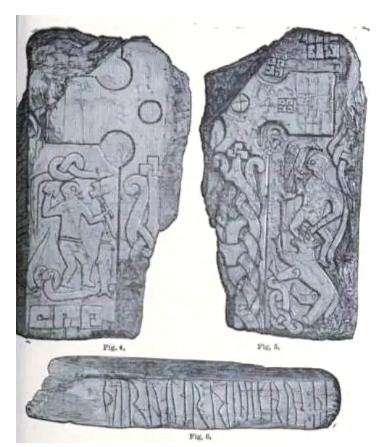
Thorwald’s Cross, a fragmented runestone depicting Odin being consumed. Image: Public Domain
Loki might have begun as a Norse god of fire—fitting considering how fire can be both “helpful and destructive,” said Brown. Fire can both burn down your house and cook you dinner. It’s tricky that way—like Loki. As Brown puts it, “You can see his two sides there [reflected in fire].” Brown also explains that there was likely a transformation in Loki over the centuries. “Within the myths, you can see Loki moving from being just mischievous to being absolutely evil. If you think of him as only being mischievous, he’s actually a creative force and often ends up getting the gods much of their magical possessions, like Thor’s Hammer, through his cunning.” Again, it’s just like Marvel’s Loki, who sometimes helps the other gods out, like when he teamed up with Thor to escape the Grandmaster in Thor: Ragnarok.
What is Loki’s relationship with the Devil?
In the long, slow conversion of the Vikings to Christianity that took place between the 9th and 12th centuries, Loki became a parallel to the Christian Devil. The creative, positive elements of him fell away leaving only the god favored by the Father (Odin/God) before getting cast out. (It does sound a bit like Lucifer, right?) Christianity paints a world that is far more black and white, good vs. evil than the Norse pagan religion—here’s little room for a grey, ambiguous figure like Loki. As Brown puts it, “The Christian religion insists that you’re either with us or against us. Whereas in what we understand of the pagan Viking religion, there were a lot of shades of grey. There was a spectrum on which you could move back and forth. You weren’t all one thing or all the other. You weren’t all female or all male. You weren’t all good or all evil. It was more human.”
Loki always moved fluidly between those two polarities—helping Thor in one story, causing an overthrow of the gods in another. In one tale, Loki shapeshifts into a mare, becoming the mother of Odin’s great 8-legged horse, Sleipnir. In another, he fathers the wolf Fenrir. The Church couldn’t really handle all that grey area Loki liked to inhabit, and so it eventually cast him as the devil himself. “[Monks] had to sort the gods into saints and devils, and Loki by being sexually ambiguous and also morally ambiguous falls into the devil [category],” explained Brown. Though Marvel’s Loki certainly channels a bit of the devil at times, we’ve luckily yet to see him become both mother and father to world-ending, multi-legged monsters in the Marvel Universe. But, there’s still time, especially with the new Disney+ series hitting the small screen.
When was Loki’s Revival?
After the Viking conversion, the Norse myths started to fade, and Loki with them—until the 1600s, when medieval manuscripts like those containing the Prose and Poetic Edda began to be translated. “The reason [these myths] became popular was because of nationalism,” Brown told us. “In the mid to late 1800s, there was the idea that what distinguished one nation from another was its cultural heritage.” This spurred Jacob Ludwig Karl Grimm and Wilhelm Carl Grimm—known to many simply as the Brothers Grimm—to go “collect the stories of the local people to prove that Germany was a nation, not a collection of states. You had the same thing happening in Ireland to prove that they were different from the English and you have the same thing happening in Iceland, Norway, Sweden, and Denmark.” This eventually gave rise to the Nazis appropriating Norse myths in their twisted pursuit of alleging Aryan supremacy.
Following the Civil War, the United States also looked to the Middle Ages to redefine the country’s fractured identity. As Chris Bishop, author of Medievalist Comics and the American Century, explained to io9, “[the Middle Ages] offered an aesthetic that was individualistic (think: the knight errant, Robin Hood, etc.), given to interpretations of exceptionalism (Camelot, the once and future king), venerable (where old equalled established and respectable), and (unlike Classicism) Christian.” The Middle Ages, or more accurately the remixing of the Middle Ages known in academia as “medievalisms,” appealed to many Americans obsessed with ideas of American exceptionalism and singularity in the 19th century. Eventually the U.S.’s obsession with the Middle Ages made its way into comic books starting with Prince Valiant in 1937, a comic strip created by Hal Foster set in and around the legends of King Arthur. Other medievalist comics followed eventually leading to the inclusion of Norse gods like Loki, Thor, and Odin.
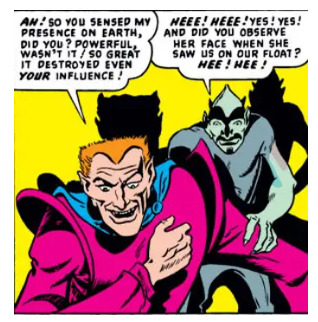
First appearance of Loki in the 1949 Venus comics. Image: Wikicommons
When was Marvel Comics’ Loki introduced?
While Loki first appeared in the 1949 comic book Venus styled after (you guessed it) the devil, the modern-age Loki didn’t hit the comic book scene until co-writers and brothers Stan Lee and Larry Lieber adapted him in 1962’s Journey into Mystery #85. It’s in that issue where Loki “becomes Thor’s enemy/ally/brother/adopted brother/etc,” said Bishop. The mischievous personality of the Norse god remains largely the same in the Loki of the comic books and films and even retains the ability to swap genders at times.
In the comics, Loki is raised as Thor’s brother in Asgard—somewhere the Marvel stories diverge from the Norse mythology. It’s Loki and Odin who are sworn brothers in the Norse myths, not Loki and Thor. As Brown explains, “Loki and Odin are blood brothers, which means they are even closer than real brothers.” In the Viking world, two people who swore a blood oath to one another formed a bond that went beyond kin, and so went the Norse Loki and Odin’s relationship. As Bishop points out, the Loki/Thor dynamic of the comics and movies is a “classic, formulaic archetype.” Thor is the “big, hunky, handsome (but slightly dumb) hero” and Loki is “his slight, quirky but super-smart frenemy. Loki is the dark, misunderstood, vulnerable shadow that audiences can relate to, reach out to, care for. Thor is that dumb jock who everyone looked up to at school, but Loki was that cool, quiet kid who went on to found a tech-empire.”
Why is Loki called a Trickster?
What does remain consistent with Loki is that he always plays the trickster. He is the manifestation of psychologist Carl Jung’s archetype: The trickster disrupts the individual and/or society causing either growth or destruction. Social scientist Helena Bassil-Morozow points out that when it comes to Loki, “despite the fact that the narrative details between the medieval Loki stories and their contemporary versions vary, the main idea remains the same—the trickster mercilessly attacks those in power and nearly causes the end of the world.” Both in the Norse myths and in Marvel, the world needs saving from Loki. He acts as the catalyst for a whole lot of upheaval—upheaval that in the Norse myths causes Ragnarök.
Loki “functions as a locus of salvation (literally, a prodigal son).” Loki just might be a savior. He’s someone audiences can look at and think “if Loki can be redeemed, so too might I.”
Perhaps that’s where the two narratives differ the most. In the Norse tales, the end of the world at Ragnarök is inevitable. Odin and Thor will die. Everything will change. Vikings lived with the knowledge that their world would end. In the MCU, we don’t know how the story ends, plus Ragnarök took place already and yet the Asgardians live on. There’s still hope that Loki will prove to be good and that the other superheroes will save the world from whatever mayhem he’s caused, or so we can hope in the upcoming Disney+ series. As Bishop puts it, Loki “functions as a locus of salvation (literally, a prodigal son).” Loki just might be a savior. He’s someone audiences can look at and think “if Loki can be redeemed, so too might I,” explains Bishop.
While the Vikings’ Loki caused the end of the world, today’s Loki might just save it. Or maybe not. And, perhaps that’s the fun of the trickster—you never quite know what they’ll get up to.
75 notes
·
View notes
Text
Cinderella September-through-November: "The Glass Slipper" (1955 MGM film)

After the success of 1953's Lili, MGM turned out this production as its next vehicle for Leslie Caron. The studio reunited Lili's creative team of producer Edwin H. Knopf, director Charles Walters, screenwriter Helen Deutsch, and composer Bronislaw Kaper for a fresh new take on the Cinderella story for grownups.
The Glass Slipper harks back to the opera La Cenerentola and looks forward to the later film Ever After by offering a mostly "realistic" Cinderella retelling. The setting is a small duchy somewhere in 18th century Europe, where Prince Charles (was he named after the original tale's author Charles Perrault or after Queen Elizabeth II's then- 7-year-old son, I wonder?) is the duke's son rather than a king's son. The Fairy Godmother becomes Mrs. Toquet, a seemingly crazy old hermit woman who constantly "borrows" and then returns small items from the villagers. The ballgown she acquires for Ella (this is the first adaptation I've found so far where "Ella" is Cinderella's real name – it will be far from the last, though) is seemingly pilfered from the Stepmother's rich cousin Loulou, the duke's former mistress, while the coach and horses are seemingly borrowed from some other ball guests. I say "seemingly" because the sudden appearance of a pumpkin and mice after Ella leaves the ball arouses our suspicions, and the film's final shot of Mrs. Toquet confirms that she is, in fact, no ordinary old madwoman.
The film's creativity doesn't end there, and nowhere is it more original than in Leslie Caron's portrayal of Ella herself. With Caron's already unconventional prettiness downplayed by a short haircut and a perpetual full-body coating of cinders, this "gamine" Cinderella couldn't be more different from Disney's forever kind and graceful beauty. Scrappy, passionate, socially awkward, and angry at being not only abused by her stepfamily but shunned and mocked by their whole village, she defiantly hurls back the insults she receives and hides her shame and fragility under a facade of sullen indifference, only breaking down in tears or indulging in dreams of happiness when she's alone. But through her budding friendship with Mrs. Toquet and romance with Prince Charles, her inner warmth, playfulness and tenderness gradually shine through. Her transformation into a princess consists of much more than just a change of dress.
This is also the first version since La Cenerentola to give the Prince and Cinderella extensive romantic interaction before the ball. They meet in the woods beside Ella's favorite pond, where, as in the opera and in many other subsequent versions, the Prince pretends to be a commoner: in this case the son of the palace cook. Despite a "wrong foot" beginning where Ella thinks Charles is mocking her and pushes him into the water, his gallantry soon wins her over, and he teaches her the various dances of the court, then gives her an invitation to the ball. Another twist on the classic tale is that, because Charles knows exactly who Ella is and where she lives, after the ball he has no trouble finding her. Instead, new conflict for the story's last act is created when Ella hears rumors that the Prince intends to marry an Egyptian princess, and, not realizing that the "princess" is herself, is heartbroken and resolves to run away. Instead of identifying Ella, the fitting of the glass slipper becomes Charles's symbolic way of assuring her of his love.
While this isn't an actual musical, it does include one song, the tender "Take My Love," sung by Prince Charles. More significantly, it includes two lengthy ballet sequences choreographed by the famous Roland Petit, representing Ella's daydreams: a comic fantasy of Ella and the "cook's son" Charles baking their own enormous wedding cake in the palace kitchen, and later a nightmare of Charles' marriage to a Cleopatra-like Egyptian princess. These fantasy ballets are slightly too long for their own good, but they're still charming, and they serve as a great showcase for Leslie Caron's dancing skills.
This is very much Caron's movie, and her feisty, complex yet endearing Ella carries the entire picture. Her slightly stilted French-accented English only enhances the sense of her awkwardness and her "outsider" status. But the rest of the cast is strong too. Michael Wilding, the second of Elizabeth Taylor's seven husbands, is a charming and likable Prince, though at age forty-three he's obviously too old for the role. Estelle Winwood is also endearing as the very quirky yet kind Mrs. Toquet, as is Keenan Wynn as the Prince's comic valet Kovin. Walter Pigeon (whose relationship with the Cinderella story doesn't end here, as we'll see when we reach 1965) provides excellent sardonic narration in voiceover.
While this wasn't the box office success MGM hoped for and isn't especially well known today, it's a sweet, lovely film all the same, and a creative spin on an old fairy tale. I recommend it whioleheartedly to lovers of both Cinderella and MGM's Golden Age of filmmaking.
@ariel-seagull-wings, @superkingofpriderock
#cinderella#cinderella september through november#fairy tale#the glass slipper#1955#mgm#leslie caron#hollywood
30 notes
·
View notes
Note
So, I don't think I've ever asked you this... what IS the whole point of the Spider-Sense? It really seems like something that only exists for writers to ignore or work around when they want to inject Legit Tension into a story.
I’ve thought about this power so much, but never with an eye to defend its right to exist, so I needed to think about this. The results could be more concise.
Ironically, given the question, I have to say its main purpose is to ramp up tension. But it’s also a highly variable multitool that a skilled creative team can use for...pretty much anything. It does everything the writer wants it to, while for its wielder always falls just short of doing enough.
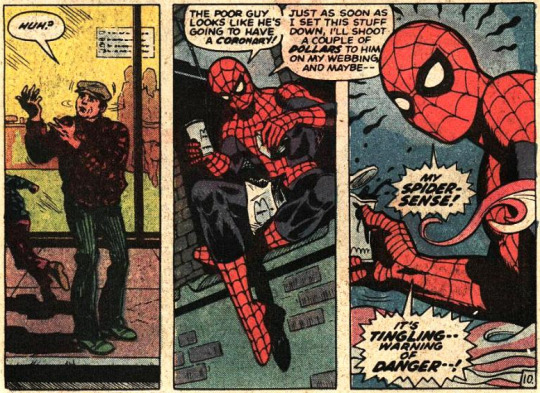
I went looking through my photos for a really generic, classic-looking example to use as an image to head this topic, but then I ran into the time Peter absolutely did not reimburse this man for his stolen McDonald’s, so have that instead.
A Scare Chord, But You Can Draw It
That one post that says the spider-sense is just super-anxiety isn’t, like, wrong. It’s a very anxious, dramatic storytelling tool originally designed for a very anxious, dramatic protagonist. I find it speaks to the overall tone of the franchise that some characters are functionally psychics, but with a psychic ability that only points out problems.
Spidey sense pinging? There’s danger, be stressed! Broken? Now the lead won’t even KNOW when there’s a problem, scary! Single character is immune to it? That’s an invisible knife in the dark oh my god what the fuck what the fU--
Like its counterpart in garden variety anxiety, the only time the spider-sense reduces tension is in the middle of a crisis. But in the wish fulfillmenty way that you want in an adventure story to justify exaggerated action sequences, the same way enhanced strength or durability does. Also like those, it would theoretically make someone much safer to have it, but it exists in the story to let your character navigate into and weather more dangerous situations.
For its basic role in a story, a danger sense is a snappy way to rile up both the reader and the protagonist that doesn’t offer much information beyond that it’s time to sit smart because shit is about to go down.
Spidey comic canon is all over the board in quality and genre, and it started needing to subvert its formulas before the creators got a handle on what those formulas even were, and basically no one has read anything approaching most of it at this point, so for consistent examples of a really bare bones use of this power in storytelling, I’d point to the property that’s done the best job yet of boiling down the mechanics of Spider-Man to their absolute most basic essentials for adaptation to a compelling monster of the week TV series.
Or as you probably know it, Danny Phantom. DON’T BOO, I’M RIGHT.

DP is Spider-Man with about 2/3 of the serial numbers filed off and no death (ironically), and Danny’s ghost sense is the most proof in the formula example of what the spidey sense is for: It’s a big sign held up for the viewer that says, “Something is wrong! Pay attention!” Effectively a visual scare chord. It’s about That Drama. And it works, which won it a consistent place in the show’s formula. We’re talking several times an episode here.
So why does it work?
It’s a little counterintuitive, but it’s strong storytelling to tell your audience that something bad is going to happen before it does. A vague, punchy spoiler transforms the ignorant calm before a conflict into a tense moment of anticipation. ...And it makes sure people don’t fail to absorb the beginning of said conflict because they weren’t prepared to shift gears when the scene did. Shock is a valuable tool, too, but treating it like a staple is how you burn out your audience instead of keeping them engaged. Not to go after an easy target, but you need to know how to manage your audience’s alarm if you don’t want to end up like Game of Thrones.
The limits of the spider-sense also keep you on your toes when handled by a smart writer. It tells Peter (everyone’s is a little different, so I’m going to cite the og) about threats to his person, but it doesn’t elaborate with any details when it’s not already obvious why, what kind, and from what. And it doesn’t warn him about anything else-- Which is a pretty critical gap when you zoom out and look at his hero career’s successes and failures and conclude that it’s definitely why he’s lived as long as he has acting the way he does, but was useless as he failed to save a string of people he’d have much rather had live on than him.
(Any long-running superhero mythos has these incidents, but with Peter they’re important to the core themes.)
And since this power is by plot for plot (or because it’s roughly agreed it only really blares about threats that check at least two boxes of being major, immediate, or physical), it always kicks in enough to register when the danger is bearing down...when it’s too late to actually do anything about it if “anything” is a more complex action than “dodge”.

Really? Not until the elevator doors started to open?
That Distinctive, Crunchy Spider Flavor
The spider-sense and its little pen squiggles go hand in hand with wallcrawling (and its unique and instantly identifiable associated body language) to make the Spider-Person powerset enduringly iconic and elevate characters with it from being generic mid-level super-bricks. Visually, but also in how it shapes the story.
I said it can share a narrative role with super strength. But when you end a fight and go home, super strength continues to make your character feel powerful, probably safer than they’d be otherwise, maybe dangerous.
The spider-sense just keeps blaring, “Something’s wrong! Something’s wrong! God, why aren’t you doing something about this!?”
Pretty morose thing to live with, for a safety net! Kind of a double edged sword you have there! Could be constantly being hyperattuned to problems would prime you for a negative outlook on life. Kind of seems like a power that would make it impossible for a moral person to take a day off, leading them into a beleaguered and resentful yet dutiful attitude about the whole superhero gig! Might build up to some of the core traits of this mythos, maybe! Might lead to a lot of fifteen minute retirement stories, or something. Might even be a built in ‘great responsibility’ alarm that gets you a main character who as a rule is not going to stop fighting until he physically cannot fight anymore.

Certainly not apropos of anything, just throwing this short lived barely-a-joke tagline up for fun.
One of my personal favorite things about stories with superpowers is keeping in mind how they cause the people who have them to act in unusual ways outside of fights, so when you tell me that these people have an entire extra sense that tells them when the gas in their house is leaking through a barely useful hot/cold warning system that never turns off, I’m like, eyes emojis, popcorn out, notebook open, listening intently, spectacles on, the whole deal.
It also contributes to Peter Parker’s personality in a way I really enjoy: It allows him to act like an irrational maniac. When you know exactly when a situation becomes dangerous and how much, normal levels of caution go out the window and absolutely nothing you do makes sense from an exterior standpoint anymore. That’s the good shit. I would like to see more exploration of how the non-Parker characters experiencing the world in this incredibly altered way bounce in response.
It’s also one of many tools in this franchise hauling the reader into relating more closely with the main character. The backbone of classic Spidey is probably being in on secrets only Peter and the reader know which completely reframe how one views the situation on the page. It’s just a big irony mine for the whole first decade. A convenient way to inform the reader and the lead that something is bad news that’s not perceivable to any other characters is youth-with-a-big-exciting-secret catnip.
Another point for tension, there, in that being aware of danger is not synonymous with being able to act on it. If there’s no visible reason for you to be acting strange, well...you’re just going to have to sit tight and sweat, aren’t you? Some gratuitous head wiggles never hurt when setting up that type of conflict.
Have I mentioned that they look cool? Simultaneously punchy and distinctive, with a respectable amount of leeway for artists to get creative with and still coming up with something easily recognizable? And pretty easy to intuit the meaning of even without the long-winded explanations common in the days when people wrote comics with the intent that someone could come in cold on any random issue and follow along okay, I think, although the mechanic has been deeply ingrained in popular culture for so long that I can’t really say for sure.
It was also useful back in the day when no artists drew the eyes on the Spider-Man mask as emoting and were conveying the lead’s expressions entirely through body language and panel composition. If you wiggle enough squiggles, you don’t need eyebrows.
Take This Handwave and Never Ask Me a Logistical Question Again
This ability patches plot holes faster than people can pick them open AND it can act as an excuse to get any plot rolling you can think of if paired with one meddling protagonist who doesn’t know how to mind their own business. Buy it now for only $19.99 (in four installments; that’s four installments of $19.99).
Why can a teenager win a six on one fight against other superhumans? Well, the spider-sense is the ultimate edge in combat, duh.
Why can Peter websling? Why doesn’t everyone websling? Well, the spider-sense is keeping him from eating flagpole when he violently flings himself across New York in a way neither man nor spider was ever meant to move.
How are we supposed to get him involved with the plot this week???? Well, that crate FELT dangerous, so he’s going to investigate it. Oh, dip, it was full of guns and radioactive snakes! Probably shouldn’t have opened that!
Yeah, okay, but why isn’t it fixing everything, then? Isn’t it supposed to be why Peter has never accidentally unmasked in front of somebody? ('Nother entry for this section, take a shot.) That’s crazy sensitive! How does he still have any problems!? Is everything bad that’s ever happened to characters with this powerset bad writing!? --Listen, I think as people with uncanny senses that can tell us whether we are in danger with accuracy that varies from incredible to approximate (I am talking about the five senses that most people have), we should all know better than to underestimate our ability to tune them out or interpret them wrong and fuck ourselves up anyway. I honestly find this part completely realistic.
*SLAPS ROOF OF SPIDER-SENSE* YOU CAN FIT SO MANY STORIES IN THIS THING
The spider-sense is a clean branch into...whatever. There is the exact right balance of structure and wishy-washiness to build off of. A sample selection of whatevers that have been built:
It’s sci-fi and spy gadgets when Peter builds technology that can interface with it.
It’s quasi-mystical when Kaine and Annie-May get stronger versions of it that give them literal psychic visions, or when you want to get mythological and start talking about all the spider-characters being part of a grand web of fate.
Kaine loses his and it becomes symbolic of a future newly unbound by constraints, entangled thematically with the improved physical health he picked up at the same time -- a loss presented as a gain.

Peter loses his and almost dies 782 times in one afternoon because that didn’t make the people he provoked when he had it stop trying to kill him, and also because he isn’t about to start “””taking the subway’’””’ “‘’“”to work”””’’” like some kind of loser who doesn’t get a heads up when he’s about to hit a pigeon at 50mph.
Peter’s starts tuning into his wife’s anxiety and it’s a tool in a relationship study.
It starts pinging whenever Peter’s near his boss who’s secretly been replaced by a shapeshifter and he IGNORES IT because his boss is enough of an asshole that that doesn’t strike him as weird; now it’s a comedy/irony tool.
Into the Spider-Verse made it this beautiful poetic thing connecting all the spider-heroes in the multiverse and stacked up a story on it about instant connection, loss, and incredibly unlikely strangers becoming a found family. It was also aesthetic as FUCK. Remember the scene where Miles just hears barely intelligible whispering that’s all lines people say later in the film and then his own voice very clearly says “look out” and then the room explodes?? Fuck!!!!
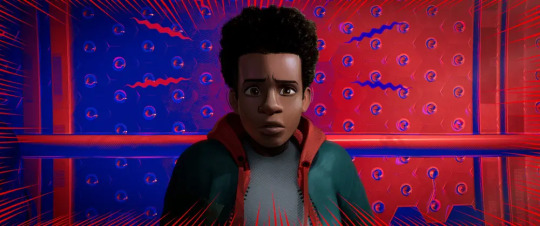
Venom becomes immune to it after hitchhiking to Earth in Peter’s bone juice and it makes him a unique threat while telling a more-homoerotic-than-I-assume-was-originally-intended story about violation and how close relationships can be dangerous when they go sour.
It doesn’t work on people you trust for maximum soap opera energy. Love the innate tragedy of this feature coming up.
IN CONCLUSION I don’t have much patience for writers who don’t take advantage of it, never mind feel they need to write around it.
#spiderman#peter parker#spiderverse#spidey#marvel#danny phantom#one day you'll see what i'm doing with it in the project i'm collabing on w/ my brother and then you'll all be sorry and hopefully impresse#mirrorfalls#asks answered#essays
1K notes
·
View notes
Note
I remember watching Falcon and the Winter Soldier, I don’t know if you’ve seen it but they addressed some racial issues. Watching the show, I did like how they addressed it but considering I myself am white, it’s not my place to say if it was done properly. But then I find out a lot of people thought it was unnecessary and it “diminished” the quality of the show (I wouldn’t know if they were black/white since users don’t say unless a picture us show. You can’t really assume who somebody is behind words if ya know what I mean?) I thought the show was great, so it was startling to find out people didn’t like it because if the racial issues. I notice it’s the same with LGTBQ+, as an example Tim Drake was revealed to be gay (one of the robin’s.) Many people didn’t like it because they’re “forcing” LGTBQ+ relating with politics when most comics are literally centered around that. Look at Captain America! Characters in comic are constantly having their stories changed from the original but suddenly when a character isn’t straight it’s a huge problem. People just find things to complain about not understanding how it may affect people
I want to address a little change in the semantics here but it is REALLY important.
See how different is saying that you're tired of corporations forcing racial and LGBTQ+ content to saying you're tired of the content itself.
We NEED representation. We need those talks about racial issues and discrimination and LGBTQ+ spaces and identities. What we don't need is that representation being shoved into a previous existing space as if it was some type of wild flavor or whatever sick crap the media is doing nowadays.
I'm not white. I'm latina in fact. I have never lived or go to USA but it can be an advantage, because I don't have to deal with the same amount od propaganda someone living out there has to live with. And let me tell you, Latam has to deal a lot with USA bullshit.
Let's be real and cynical for a moment: we're talking about a capitalist system, which means they want our money. No matter what, they want our money. And they're gonna do whatever it takes to gain that money. They're like "oh? Talking about racism and the LGBTQ+ community is what's giving money now? Let's do it!"
Whatever. That's the system.
I can share the feeling of hating how corporations are trying to shove down our throats certain content. Because it's not well thought or planned! We deserve well written poc characters, we deserve well planned plots and consistent arcs, the same with queer characters.
BUT and it's a big but, we need to start somewhere. We need to tell the media "this is what we want to watch: women getting the rights they deserve, teens not being oversexualized, poc and queer characters, more diversity". We first need to create spaces for this categories, their own spaces. Not spaces for white people adapted to other categories, no. We should not accept the remainings of whatever they produce. And now that we have the spaces, we need to push to give opportunities for people of those communities.
Marvel is not the best with diversity. They have fucked up several times, but still is highly important that they are showing representation, that they are adding that type of content.
What people needs to understand, yet again, is that things are not black and white. Are they doing things right? Yes, at some level. Should they do things way better? Also yes.
For example, if suddenly the bnha / mha fanbase decided to put Spinner as the most popular character, Studio Bones would try and show him more and his whole arc talking about racism within the bnha / mha society. Do they want the money? Well, they're gonna get but only once they start giving us the content we deserve and want.
Now, people who just wish corporations stopped making "gay shows" or "racial shows" do really need to shut up and stay down. It's been white media since forever, WE'RE tired of that. Their culture? I'm gonna admit, from the point of view of Latam sometimes talking about races can be pretty tricky. Even the more white man from Europe has African blood and million of identities running down his veins.
The culture of USA has been built in the back of the immigrants. Their culture has never been plain white! They're living a fucked up fairytail! What about the indigenous people of USA? The black people? What about the many other identities from Asia and Europe and Oceania and Africa? What about the Americans? Because there's a WHOLE continent called America, USA people are just part of the Americans of the north.
We can't stop talking about racial issues when most of USA itself is made of racial issues. As simple as that.
Aaaaaand this has been such a long rant. Sorry anon, I just get really angry with the whole Hollywood culture sometimes, and the fans who are incapable of seing the point behind the shows addressing racism.
If I've said something wrong, I ask people to point it out so I can apologize and change it. I'm not thinking clearly right now for the rage lol. I swear being latine goes hand in hand with having strong opinions about USA politics.
Also this is my point of view, personal, from my experience. I'm not saying other people can't have their own takes or opinions and I don't mean to invalidate anyone. I'm just ranting.
8 notes
·
View notes
Text
James Bond Comics
EDIT: If you’re intriguied, you can buy the comics here: https://www.dynamite.com/htmlfiles/search2.html?0=19&next0=&KMPZ=james+bond (maybe don’t start with the Warren Ellis ones, even if they came out first)
As part of my ongoing James Bond obsession, I followed up reading every single one of Ian Fleming’s James Bond novels, by reading every single one of Dynamite Comics’s James Bond comics. And they’re REALLY REALLY GOOD, much more so than the books, and not enough people have read them. So here’s a short list of the highlights:
M and Moneypenny are both black
Moneypenny is Bond’s best friend and their banter is GENUINELY ADORABLE.


James Bond, but written by a diverse cast of writers including a team of two nonbinary black writers, Vita Ayala & Danny Lore
60 issues and two graphic novels, many of them dealing with quite dark themes, and ZERO SEXUAL ABUSE STORYLINES OR SCENES.
An adaptation of Goldfinger but instead of the only Korean character being a dehumanized villain who never speaks, Oddjob becomes a handsome South Korean agent who has a flirtatious rivalry with Bond
Hot Oddjob who Fucks

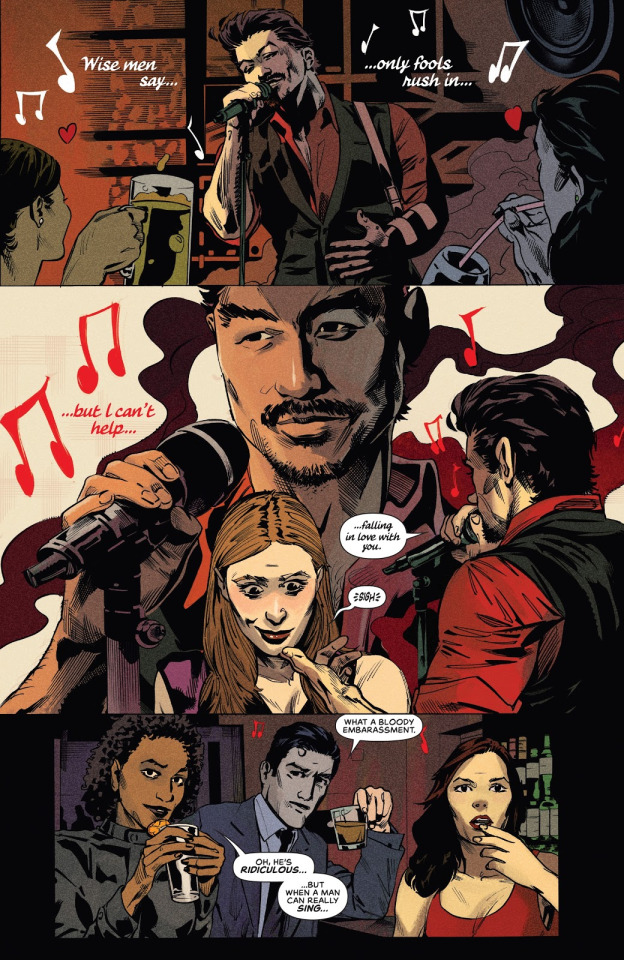
Bond’s friends, especially Moneypenny, constantly roasting Bond
Bond gets hugged (by Oddjob)

Bond gets hugged (by Moneypenny)
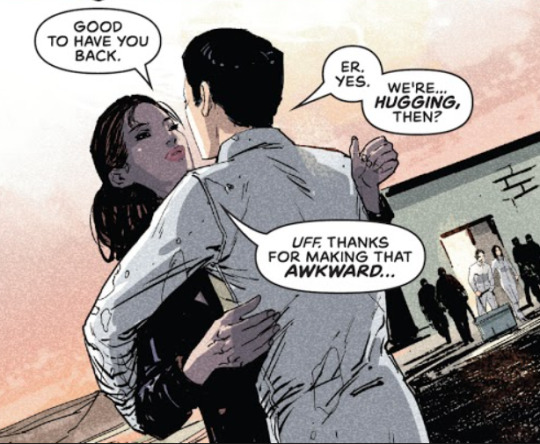
The character designs for Bond and Moneypenny and Q are pretty consistent, but M’s character design is all over the place, sometimes he looks like a normal old man, sometimes he looks like a decaying mummy, and sometimes
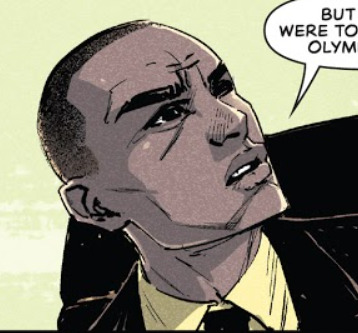
SOMETIMES M IS HOT
The real villain of Goldfinger turns out not to be Goldfinger but the libertarian capitalists running an off-shore libertarian city
Mr. Big from Live and Let Die comes back, but this time in a story written by two NB black people and starring three black heroes in addition to Bond
James Bond as written by people who realize the British Empire isn’t the good guys
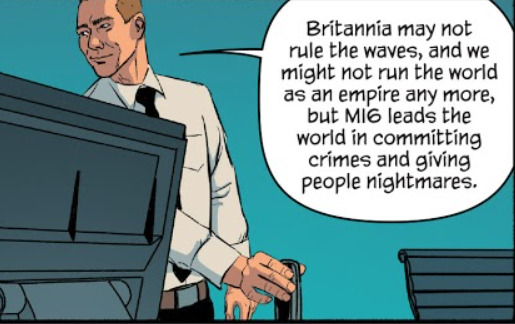
bond gets topped bond gets topped

This OC created by the aforementioned trans writers, Ayala & Lore, is so cute and she’s also an interesting and complicated female character who DOESN’T wind up falling into Bond’s arms
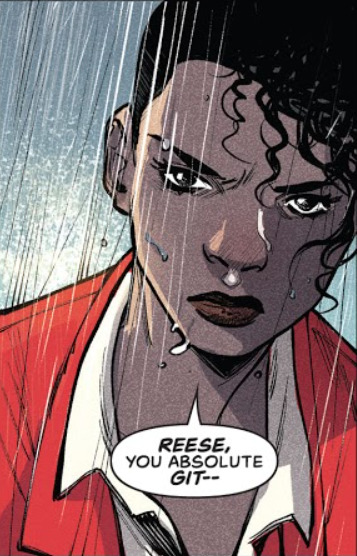
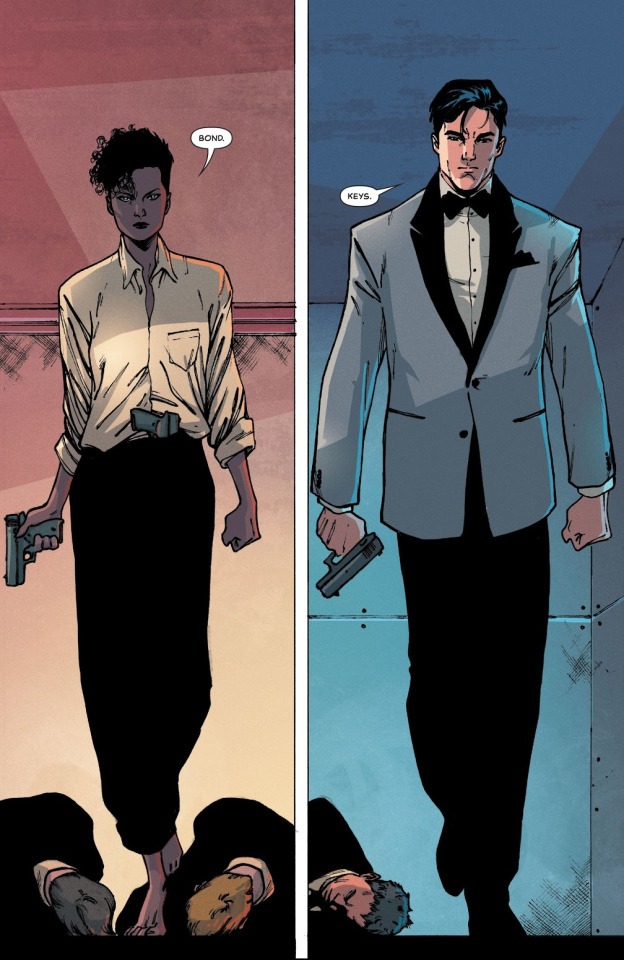
James Bond kicks Nazi ass
James Bond kicks Tory ass
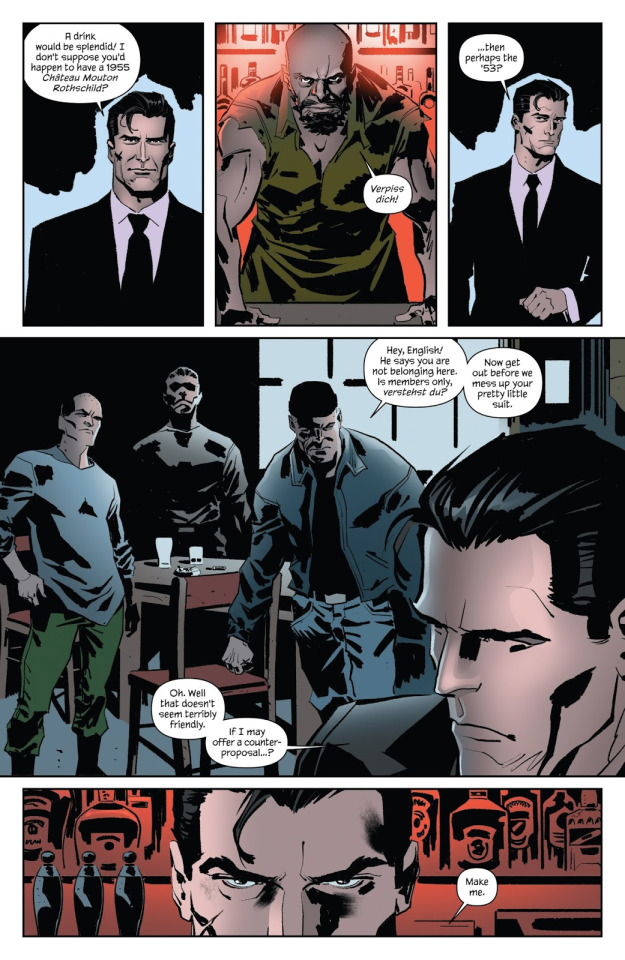
Moneypenny is M’s bodyguard, not just his secretary, and she kicks ass when she wants to
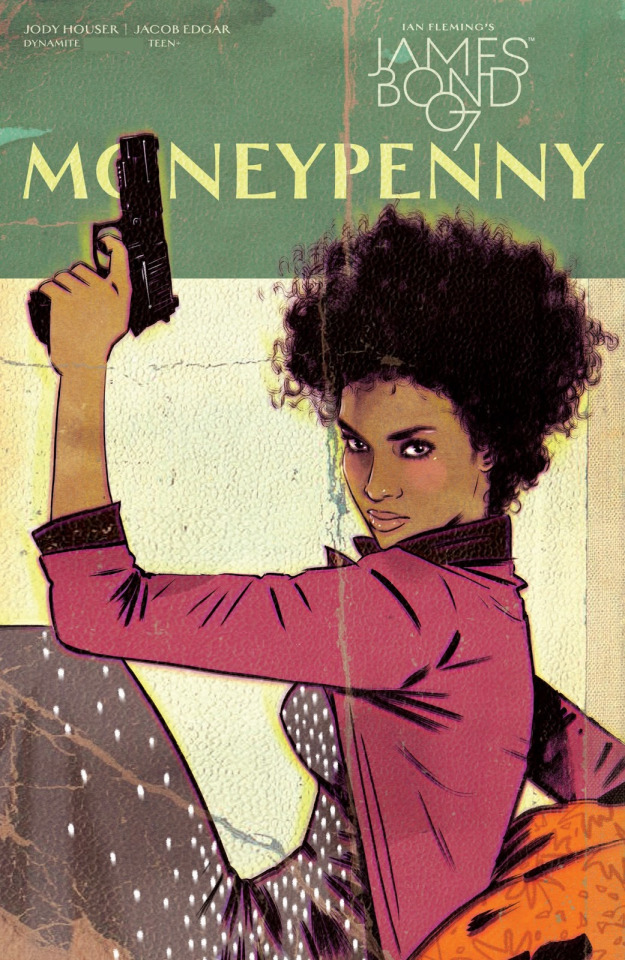
I just really love this version of James Bond, okay
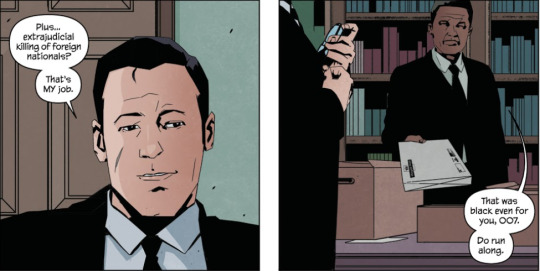
arse ghosts
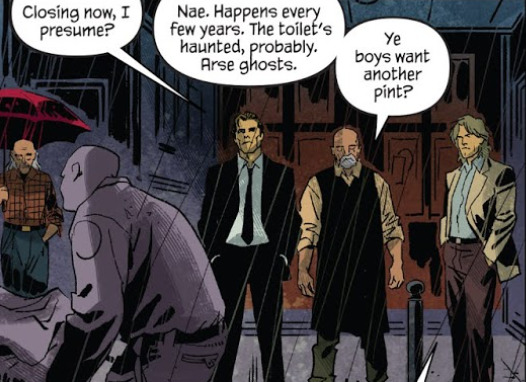
36 notes
·
View notes
Text
(Spoilers ahead) Partner and I finished Season 2 of the Fruits Basket modern remake this weekend. I had only seen the, uh, 2001 original anime (2001? It was 20 years ago? Fuck), with no exposure to the manga, so a lot of the plot elements were new to me. I liked a lot of the show, but I have some big complaints about it handles its villain, Akito:
1: Akito occupies a very awkward place in this story. He (don’t worry, ill get to that) is the head of the main crew’s family and constantly inflicts abuse on all of its members, and is therefore the source of conflict for the plot, both in past trauma and present attempts as control and gaslighting.
Okay, so stories often have to walk a tightrope with abusive characters like this. Stories are normally pushed along and resolved internally - the main cast is going to experience the pain and drama, and fix it themselves, because that is the arc. For many plots that is easy, but if the story revolves around an abusive sibling/parent figure like Fruits Basket does, you will always be asking yourself the question “uh, why doesn’t anyone call the cops? or why don’t they just leave?” There is a tension between realism in the setting and the needs of the plot.
You can in fact resolve this tension in a lot of ways. If the abuse is primarily mental, slowly building, inflicted out of sight of responsible parties, etc, you can make this work. Lots of people don’t report abuse to authorities, or just move out of their house, but instead deal with it due to it being normalized. Other ways include making the characters teenagers - they don’t think of the world as having authorities outside of family (or school) and its much harder for them to reach outside of that bubble - the classic highschool bully problem. So Akito can work if he is subtle, slowly ramps, and controls his surroundings to hide his abuse from relevant authorities.
Anyway here is Akito pushing a 17 year old girl out of a two story window shattering her back and hospitalizing her for months:
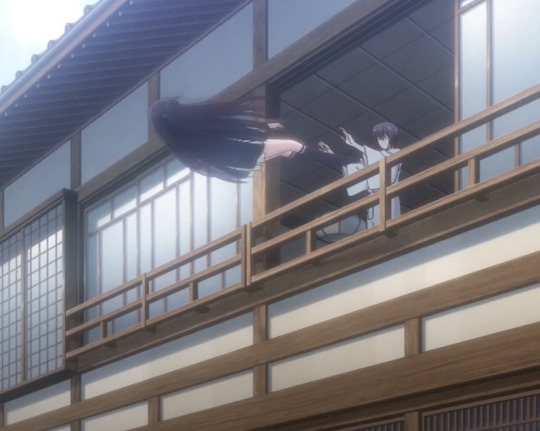
And here he is threatening a 17 year old boy with life confinement in a literal cage unless he, uh, wins a duel with his cousin?

These are the worst moments but they are far from alone. This person is a raving lunatic, which fair enough that the 17 year olds don’t know how to handle that, but Akito himself is no older than 20. And the cast of characters who know everything that is going on includes:
-27 year old *published author* Shigure, who directly cares for both Akito and two of his abuse victims
-27 year old completely-independent business owner, Ayame, who is the *brother* of one of the abuse victims
-27 year old licensed medical doctor Hatori, who lives with and is the physician of Akito.
Hatori is violating every ethical obligation of his profession on the daily, dude is stone cold! This again could work if these characters were bad guys, but they aren’t - they are sympathetic protagonists or in Aya’s case even comic relief! The show wants you to think they are doing their best, Shigure even has a secret “plan” to deal with Akito that he has been planning for *years* and they all have "reasons” why they feel stuck due to the Zodiac curse yadda yadda. But you have to memory hole the fact that they are functioning adults in 21st century Japan, because otherwise Shigure and Hatori in particular reach levels of negligence to the children they care for that it tips right on over into being evil itself.
These kids go to public school, guys!
Now I know what any defender would say - “its the curse!” The whole cast carries the curse of the Zodiac where God invited them in long-ago times to a dinner, Akito is the current manifestation of that God in some form, and so they are bound to him to enact that “dinner” metaphorically in some way by staying by his side (also they transform into their respective Zodiac animals when chest-on-chest contact occur from the opposite sex, because Anime). Again, you can make this work! Show Akito exerting a magical force on characters who stray too far from him, or a compulsion locking them to being forever near the Sohma estate where he lives. Something showing that yeah, the relevant authorities could not handle this and dragging Akito away in chains won’t work. But sadly the show just...doesn’t bother. There is a “curse” but we are two seasons in and any negative consequences of the curse beyond Akito Being An Asshole are Footage Not Found (Kyo is an exception, but not a relevant one), despite everyone pretending like there is. Everyone wants to break the curse? Fine, kill Akito. Then you all get to live in peace and transform into adorable animals when you’d like, curse broken. Just throw “doesn’t cuddle or do missionary position” on your OkCupid profile to make your love life work, no one is gonna bat an eye, and some people will be, lets say, readily down with your particular transformation fetish.
None of this is fatal to the show per se, you can suspend disbelief. But the show takes itself so seriously that you can’t help but think these thoughts, and it colors in particular how the older characters act. And it would be so easy to fix! They just didn’t bother.
2: Can someone explain to me, in the year of our Zodiac Lord 2021, how a character secretly being a girl is a “surprise reveal” worth ending a season on? The final shot of Season 2 is that our resident asshole Akito has some female-presenting nipples, which is apparently a Big Deal? (maybe the show takes place on Tumblr, *zing*) Its the villain, they are an abusive maniac and also metaphorically/actually a divine being. Why does doubling their X chromosome count affect or change anything? I can envision plots where that is relevant, but this was not one! Maybe the next season will build that into the arc, but they haven’t done that yet, so the moment itself falls incredibly flat.
Yet people obviously feel differently from me - as is my habit I checked the reddit threads for the final episode and they are replete with people commenting on how shocking a twist it was, how they looked forward to it as manga readers, etc. Its a classic suspense trick I think, of how you can just have an event be surprising without it being thematically relevant, and it will work as long as you add the right drama bells around it. This was just a pretty egregious example of it.
-----
Between these problems, Fruits Basket has this aura of laziness around its none-core characters that does drag it down. Which is sad since I do actually like how it treats its core cast, even if it is stretched out over twice as many episodes as it needs. I am just guessing here, but beyond just “not caring” and doing it for the drama, I think it stems out of adapting the manga “faithfully”.
So Fruits Basket got an anime adaption in 2001, and the author (Natsuki Tayaka) haaaaated it. It was only twenty six episodes, a ~third of which got consumed just introducing the zodiac cast, so its plot had to be mixed around and truncated, and it was much more comedic and zany in tone. It was still very popular, so demand for a “better” adaptation of the full manga was high, which eventually happened in 2019. This time around Tayaka insisted on a high degree of control and faithfulness - I would bet it was essentially a “shot for shot” adaptation, and I have seen manga/anime comparison compilations to that effect.
The problem lies in how manga are made - they are almost never planned out start to finish. You pitch like a chapter, it gets picked up, and then its being published in tandem to its own production. That means that its pretty rare for the ending to be thought out, and the story figures itself out as it goes. Early manga Fruits Basket is pretty zany! Which means it plays fast and loose with its worldbuilding and its adult characters act silly most of the time. Once the high drama kicks in you realize that doesn’t work anymore, but you have already published it all months ago, no way to revise it now, so you just have to bite the bullet.
An anime adaptation would be a good time to clean that up! Its what Kare Kano did - a manga that starts as a cute highschool romcom and ends in sexual assault, for the anime they tried to create tonal consistency right from the start and change plot details around accordingly. But when the author, burned by a past studio, insists on Complete Accuracy...well then the anime has to bite the same bullets the manga did. And so you get Fruits Basket (2019), a show destined to never rise above its source material.
But hey, if Season 3 ends with Tohru just whipping out a gun, shooting Akito right between the eyes, and walking off into the sunset with a harem of zodiac hotties, then all will be forgiven.
42 notes
·
View notes
Text
socknography: the importance of preserving fan creator biographical data
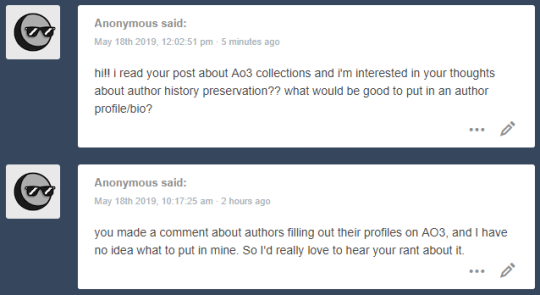
i wrote earlier on utilizing collections and bookmarks to boost the archival power of ao3, and in that post mentioned how i wish authors would fill out their bios so we can preserve fanauthor information as well as we preserve the fics themselves. so, here is my rant about WHY WE ARE SO IMPORTANT.
for my masters thesis i wrote about the layered pseudonymity of fanfiction authors, and after doing a ton of research, i find myself still thinking of the pseudonymous/anonymous divide as it pertains to fic. we have authors we consider “famous” and ones whose followings eclipse that of traditionally published authors, but unlike traditionally published authors, we don’t put a handy bio at the end of our fics. in fact, if you want to find out about the author, you have to hope they’ve linked somewhere to their tumblr or twitter or dreamwidth, or they have consistent pseuds across platforms. and from there, you have to hope they have an ‘about me.’ but most, myself included, don’t.
unlike traditional publication -- where amazon and goodreads and even the back of the book contains biographical info -- and even unlike the rest of fandom archival etiquette -- which, despite having virtually no committed rules still maintains its organizational structure -- there is no standard etiquette on fanauthor biographical data.
i speculate the reasons fanauthors are hesitant to write their own biographies is very complicated:
there is no “ask” for it or existing standard. when i publish stories under my real name, i’m required to provide my bio, which contains my accomplishments, where i got my degree, where else i’m published, and my website. all literary author bios follow this formula, so they’re pretty easy to write. other than this post, i have never seen a request for fanauthor bios. so without an editor demanding it, and without a standard formula or platform to draw from, a total lack of information becomes the norm, and almost any info other than the standard “name. age. pronouns. ao3 name. list of fandoms and/or pithy one-liner” of tumblr or occasional ask game is seen as a deviation from the norm. even ask games get a bad rep sometimes, and they’re transitory, a post you see as you’re scrolling through to somewhere else, not static, like a dedicated profile page.
pseudonymity veers too close to anonymity. an anonymous author cannot have a biography. a pseudonymous author can, but biographies may be seen as defeating the purpose of writing under a pseudonym, or multiple pseuds. a sock account is a sock for a reason -- you don’t want it associated with your main. moreover, i believe fandom creates an environment in which to acknowledge your accomplishments and promote your own content is seen as narcissistic. fanfiction can sometimes be seen as a genre of selflessness, donating time and energy into a community centered around a shared canon, not personal gain. to acknowledge the self publicly is to invite attention, and attention is contradictory to anonymity.
shame and humility. the more information you have on the internet, the easier you are to find. very few fanauthors use their real names, or feel comfortable connecting their fan identity to their real one. i hear pretty constantly how often fanauthors hide their fannishness from their coworkers and loved ones, how only the people closest to them know they write/read fanfic. moreover, you might think “my most popular fic only has 10 kudos and 1 comment, nobody wants to know about me” (which is so not true, but i’ll get to that in a minute).
fandom is constantly changing. with a central archive for fanfiction in place, it’s easier now to be in multiple fandoms at once than it ever has been. if you want to read all sugar daddy fics, there’s a tag for that, and if you’re not picky about canon, you have an entire buffet of fandoms to choose from. communities are growing and shifting and changing shape. i move fandoms, and i keep my friends and readers from previous fandoms. i get dragged to new fandoms frequently. my interests and inspirations change, but i don’t erase my history or identity every time i move, i only add to it. i am always betts whether i’m in star wars or the 100 or game of thrones. but if you only read my fic, you don’t know the stories behind it. many people don’t know i entered fandom in the brony convention community in 2012, or that i was sadrobots before i was betty days before i was betts, or how fandom changed my life and led me through a path of personal trauma recovery, or that i co-founded wayward daughters, or ran the fanauthor workshop, or all these other things about fanfic that is not fanfic itself.
if you are a fan creator, your fannish personal narrative matters. telling your story helps preserve the metatextual history of our genre.
i think constantly about what our genre will look like in 30 or 50 years, if it will be like other genres that began as subversions of the mainstream: comic books, beat literature, science fiction. genres that, at the time involved groups of friends creating stories for each other, bouncing ideas off of one another, experimenting with or distorting other genres, and which became, over time, well-regarded forms with rich histories.
maybe one day, like the MCU, we’ll have a dedicated production company that churns out adaptations of longform coffee shop aus written between 2009 and 2015. maybe “BNFs” will be read in high school literature curriculums. maybe our work will end up on the real or virtual shelves of our great grandchildren. and if that happens, if fanfic goes entirely mainstream, how will fanfic authorship be perceived? how will fanpeople in 2080, if humanity is still around by then, interact with the lexicon we’ve created and preserved? what would you do if you found out Jane Austen wrote under five different sock accounts across three platforms over the span of twenty years? how would you, a fan of Pride & Prejudice, even begin to find all of her work?
we have so many social constraints pushing against us. there’s purity culture, which encourages further division of identity -- fanauthors may write fluff on their main and have various sock accounts for underage/noncon fics. if you’re a scarecrow, you’re much harder for a mob to attack. there’s misogyny, which dictates women/queer ppl shouldn’t be writing about or indulging in or exploring their sexuality at all. there’s intellectual property and a history of DMCAs, which, although kept at bay by the OTW, may still have influence on the “illegal” mentality of our work. with social armies against us, it’s easier to exist in the shadows, on the fringe. we change URLs based on our moving interests, and split our identities a million different ways, and keep sarcastic “me” tags full of self-deprecating text posts. we are difficult beasts to catch, because we have not been allowed to exist.
i spent a lot of time today googling the word for “pseudonymous biography” and came up empty-handed (if someone knows of an existing word, pls let me know. “pseudography” is apparently a fancy word for a typo; “pseudobiography” is a fake biography), so for lack of anything better, i’ve come up with the term “socknography” because 1) it’s funny and doesn’t sound intimidating, and 2) it encapsulates the sensitive and complicated way fanauthor identifying conventions work. and also i think “fanauthor biography,” “bibliography,” and “profile” just doesn’t cut it for the actual work of these pieces. they don’t necessarily include IRL biographical data, they include more historical/community context than a bibliography, and the words “profile” and “about me” don’t really inspire interaction, or acknowledge the archival importance of this work.
astolat’s fanlore page is my go-to example. astolat writes under multiple pseuds and has major influence in the history of fandom. she’s also a traditionally published author, but you notice, her ofic novels are not mentioned, nor any other real-life identifying information. fanlore has a really good policy on this in place, for those concerned about doxxing.
(moreover, i am not suggesting you centralize your socks. they’re socks for a reason. but most everyone has a main, and that main identity has a story.)
there are 2 existing spaces to preserve socknographies.
fanlore, a wiki owned by the OTW, you can make an account and create a user page (which is different than a “person” page) using a user profile template
ao3′s “profile” page, which is a big blank box in which anything goes
(i’m not including tumblr on this list because i don’t think it’s a stable platform.)
fanlore’s template is straight to the point and minimal, which doesn’t really invite narrative the same way a literary bio would. ao3′s big blank box leaves us with the question -- wtf do i say about myself? how do i say it? how much is too much? and because of that, most profiles are either blank or only include a policy on translations/podfic/fanart, and maybe links to tumblr and twitter. but let me tell you, if i have read your fic and taken the time to move over to your profile, you better believe i am a fan. and as a fan, i want to Know Things.
here are the things i want to know, or
a potential template:
introduction (name/alias, age, location, pronouns, occupation)
accomplishments (degrees, personal history)
fan history (fandoms you’ve been in, timeline as a fan, how you were introduced to fandom/fanfiction, what does fandom mean to you -- this is where your fan narrative goes)
fandom participation (popular fics/posts, involvement in fan events/communities, side blogs, interviews, etc. 3 & 4 might be one and the same for you)
spotlight (which of your fics are most important to you/would you like others to read and why? what are the stories behind your favorite fics you’ve written?)
find me elsewhere* (links to tumblr, twitter, insta, etc.)
policies on fanart, fanfic of fic, podfics, and translations
*you cannot link to ko-fi, paypal, patreon, or amazon on ao3/fanlore per the non-commercial terms of service
i’ll be working on filling this out for my own profile as an example, but you can also see how my @fanauthorworkshop participants filled out their fanauthor spotlights, and the information they provided. obviously, you should only share that which you feel comfortable sharing, and as your fandom life changes, your narrative will change too. it’s not much different than updating a CV or resume.
tl;dr the goal is to provide a self-narrative of your fan life/identity for posterity. who are you and why are you a fanperson? why do you create fan content? what are you proud of and what do you want to highlight to others? who are you in this space?
3K notes
·
View notes
Note
I was just thinking about WA and how although they aren’t written perfectly they really are the gold standard. When you look at these other superhero shows or movies, there always seems to be some type of issue with the main ship. With SG, her ships have not worked out for diff reasons, Arrow, they dismissed the canon ship of Oliver and Laurel and went with Olicity instead which had its own issues, BL, Jefferson and Lynn divorced, constantly having issues. The jury is still out on BW. Regarding movies, WW had Steve who died, BM had a couple of LI, SM has Lois, Thor had Jane but that didn’t work out, Captain A was mostly solo, Iron had Pepper but they broke up for a time before getting back together, Spider-Man had a couple of LI in the different iterations, Incredible Hulk can’t sustain a ship. I’m sure I’m missing some, the point being that this genre isn’t great about portraying and sustaining healthy loving ships. That’s what has been impressive to me. The superhero genre is not kind to relationships. Again WA aren’t written perfectly but they are written pretty damn good and I’ve really enjoyed their journey through the years and how much stronger they get as a couple through it all
Comics are constantly over-writing canon, if you will, and there is so much inconsistency, which is why it’s hard to find stable, loving ships in the superhero genre. There are iconic ships in both DC and Marvel, you know, BatCat, PeterMJ, Wondertrev, etc., but it’s hard to get a consistent narrative, because different people want different romantic relationships in their issues and so you get different canons, and it’s just... messy. And I think some of that definitely reflects in live-action. I mean, Clark and Lois is the most well-known, beloved couple from superhero media, and so we constantly see them in different iterations in live-action. Diana and Steve are a good example of the live-action Wonder Woman films capitalizing on how much people love romance, which to me is great, because a good superhero adaptation always centralizes a good love story. (For the record, I think Jeff and Lynn have a really great relationship on Black Lightning, when the show actually remembers their relationship, which is something we saw very little of in the last two seasons. For the most part, because of Lynn’s story-line in season 3, they were mostly at odds, although I loved when Jeff, Anissa, Jen, and the team save Lynn in 3x13, and he’s all, “Nobody threatens my wife.”) I agree though that for the most part superhero live-action has fumbled the bag a bit when it comes to romantic relationships, but I’m not surprised given how messy comics are when it comes to stable canon.
Which is why Barry and Iris are unique. Arguably the most stable, or certainly one of the most stable, comic canon ships means that there is this protective canon when it comes to Westallen. The Flash’s Barry and Iris are basically the first real live-action iteration of the romantic ship, and the show was protective over this love story. They made it clear from day 1 that Westallen is the endgame ship, and the narrative has reinforced the strength and stability of their love time and again. And for that, I commend the show. Whether it was serendipitous or very, very deliberate (and personally I think it’s a combination of both, even if that’s somewhat contradictory), the narrative has crafted one of the best love stories not only within the superhero genres but on television.
7 notes
·
View notes
Text

𝐉𝐄𝐒𝐒𝐄 𝐌𝐂𝐂𝐑𝐄𝐄: 𝐬𝐨𝐦𝐞 𝐭𝐡𝐢𝐧𝐠𝐬 𝐭𝐨 𝐭𝐚𝐤𝐞 𝐢𝐧𝐭𝐨 𝐜𝐨𝐧𝐬𝐢𝐝𝐞𝐫𝐚𝐭𝐢𝐨𝐧.
a pretty important meta to my portrayal.
so if you haven’t figured it out already, my portrayal of jesse is pretty much just a mash of western tropes and popular western media, so i’m gonna talk about those things at length here. also a lot of general headcanon housekeeping/accumulating important things to know. buckle up.
the individual vs. the community. jesse consistently flip flops between being a loner and being a part of the community he’s presented with at that given time. he constantly drifts between those lines, and it’s mostly by his own design. this is the most apparent with blackwatch and post recall overwatch respectively. it isn’t that he doesn’t want to truly be part of a community, because he does, but he doesn’t know how. he is a killer, a thief, and overall isn’t a very stellar person. he doesn’t know how to be normal, he hardly even feels like a human most of the time. he doesn’t know how to adapt to normalcy or pretend to be something that he isn’t, but he does care and tries to act in the best interest of the people trying to accept him. it isn’t for lack of trying on their part; it’s jesse. he presents the illusion that he is part of the group when he knows completely that he isn’t, and never will be, and then takes back off on his own once the trouble is over. more often than not, he won’t even introduce himself completely to people as a means of keeping a layer in between them; he rarely introduces himself as anything other than MCCREE. he will not let himself forget what he is, as much as the longing for community tempts him - know that it is very hard to keep him around unless he has a very specific reason. a man has to be what he is.
you can’t be a bad person and expect good things to happen to you. so this is an arthur morgan quote, if you didn’t know. i take from red dead here and there in terms of characterization. jesse lives by this quote in particular almost to a t and fully believes that 1) he is not a good person, as characterized by his rough past and that there is no redemption for that, and 2) that his lack of goodness has contributed to the bad things that have happened to him. the loss of his arm and his eye, though devastating to him, also seemed fair to him. blackwatch falling apart seemed fair to him. losing everyone he’s ever cared for seems fair to him, even though it realistically isn’t. it’s going to take more than your muse chanting YOU’RE NOT BAD JESSE!!! at him for him to get that. this is deeply ingrained in his sense of self and it’s going to take a lot of careful, thoughtful work to undo that.
he lives by his own code. jesse is a vigilante bounty hunter; he punishes people in need of punishing the way that he sees fit which, more often than not, is death. his main source of income is hunting down rapists, pedophiles, murderers ( ironic? ) and other violent criminals. he doesn’t care for the justice system. he doesn’t care what anyone else thinks. he does what he believes will protect people best; they can’t re-offend if they’re dead. even if submission means there will be less people at risk, that’s what he’ll do. take the train hopper comic, where he straight up gives talon what they want so as not to endanger any more civilians. his stance on this is unmoving, and he will get nasty if you try to argue it with him. this is probably the one thing he doesn’t retain SOME kind of open-mindedness for.
jesse does not exemplify the ‘idiot southerner’ trope and if you insinuate that he does on this blog, i will smite you. jesse isn’t stupid. he was smart enough to co-run a highly successful gang as a TEENAGER and then was accepted into a covert ops unit, aka blackwatch. he hunts people that professionals often CAN’T FIND for a living, and he does it well. you have to be pretty damn smart to handle all that and the fanon interpretation that jesse is an idiot is a huge pet peeve of mine. he does have moments of cluelessness in some social and slice-of-life situations just because he doesn’t hang around people very much, but he’s incredibly smart. he often feigns stupidity and flirtiness to get people to underestimate him or think little of him, but it’s just that: an act. he’s not dumb, nor does he want to fuck everyone he meets, nor is he a ‘fake cowboy’ who doesn’t know what a horse is. please respect this because it drives me absolutely bonkers when people follow me expecting any of those things in my portrayal.
#i will probably add to this later as more things come uo#*up#and im gonna link it in my pinned post but#these are all the big ones i could think of#💥 𝐀𝐈𝐍'𝐓 𝐆𝐀𝐓𝐇𝐄𝐑𝐈𝐍' 𝐍𝐎 𝐌𝐎𝐒𝐒 ― hc.#tw long post
8 notes
·
View notes
Text
It’s Summer And We’re Running Out Of Ice - Watchmen (TV Series) blog
(SPOILER WARNING: The following is an in-depth critical analysis. if you haven’t seen this episode yet, you may want to before reading this review)
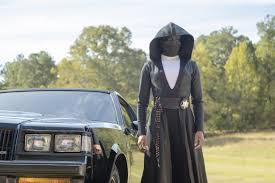
I’m not going to lie. I was incredibly sceptical going into this. This isn’t the first TV adaptation of a classic novel to go beyond the source material and try to continue the story, and they nearly always suck (see The Handmaid’s Tale and The Man In The High Castle). There’s a reason why books end where they’re supposed to end. If the author intended to carry the story on, they would have done so. This is why I get angry when the TV industry arrogantly oversteps the mark and try to continue a plot that has already come to a satisfactory conclusion. Doing a sequel to Watchmen, a story that hinges on the ambiguity of its ending, is just utter madness to me, and allowing Damon Lindelof to write that sequel borders on moronic at first glance. This is the man behind the TV series Lost, a show that ran out of steam within the first couple of episodes due to the fact that the plot was complete and total bollocks and the fact that nobody could be bothered to come up with satisfying answers for these ludicrous mysteries and series arcs beforehand. They were just making that shit up as he went along. Now you’re handing Lindelof the keys to one of the most intricate and detailed comic book properties of all time?! Fuck, why don’t you just let JJ Abrams direct the next Star Wars mo- Oh yeah, I forgot, he already did that.
Thankfully, judging by this first episode anyway, HBO’s Watchmen is nowhere near as bad as Lost. It’s certainly far more engaging and coherent. Does that mean I’m looking forward to the rest of this season? Well... I don’t know if I’d go that far. I’m definitely intrigued though.
HBO’s Watchmen is a sequel to the graphic novel (Lindelof called it a remix, but come on. Grow a pair and call it what it is. A sequel). Superheroes are still illegal, Robert Redford is now the President, Rorschach’s death has inspired a white supremacist cult, and it’s raining squid.
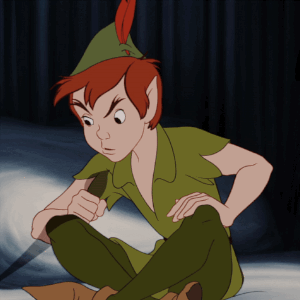
Yeah, the raining squid thing feels like the only egregious bit of fanwank in here, to be fair. Maybe they’re going somewhere with this, but I have my doubts. Are we supposed to assume that Ozymandias has been making squid rain for the past thirty odd years in order to keep up the whole alien invasion ruse? Why squid rain? And why is everyone so nonchalant about it? Shouldn’t people be just a bit concerned by this, considering what happened in New York?
Speaking of Ozymandias, we see him riding a horse and writing plays for his butler and maid in some fancy mansion. Quite what the significance of The Watchmaker’s Son is, I don’t know. All I do know is I’m not going to be able to sleep at night without thinking about Jeremy Irons’ thighs from now on, so thanks for that.
Putting my cynicism aside for a moment, I do like what Lindelof is trying to do here. He’s not merely cashing in on the Watchmen brand. There is a genuine effort to do something fresh and different with this material, and I commend that. Watchmen’s central theme has always been about power, but whereas the source material focused mainly on its relation to sex (Comedian’s hedonism, Nite Owl’s impotence, Rorschach’s mummy issues and the sexual objectification of Silk Spectre), the TV series seems to be zeroing in on race as a topic. This I applaud. Expanding on certain areas that the graphic novel only ever really touched upon is a great idea. This doesn’t feel like a repeat of the graphic novel, but rather a clarification of it, exploring areas and themes that Alan Moore and Dave Gibbons may have overlooked. This helps set this series apart from the outset.
The opening scenes where we see the Tulsa Massacre of 1921 is a pretty harrowing way to start. I’m ashamed to say I had no idea about the Tulsa Massacre prior to this, and we could have a whole other discussion about why schools seem to have been avoiding teaching specific topics like this in favour of the broad strokes of the Jim Crow era, but now is not the time. The fact that it’s depicted here sets the stage for what’s to come. Some have criticised the show for the length of time the opening focuses on Tulsa, claiming that it sensationalises the pain of black people at that time. I personally don’t think it does. It’s not overly graphic or gratuitous, at least in my opinion, but it is a very shocking way to open a series. Some might say even upsetting, but I think it’s important that we saw this because it’s relevant in setting the tone for the episode and indeed the season as a whole, as well as letting the audience know that this show isn’t going to fuck around or shy away from more sensitive topics, and I can respect that. Unlike Zack Snyder’s overly stylised adaptation from 2009, Watchmen the HBO series is grounded very firmly in reality.

Let’s discuss characters. This episode mostly focuses on Angela Abar, also known as Sister Night. Regina King has given some terrific performances in the past and this is no exception. She’s simply phenomenal. The way she switches from light-hearted wife and baker to violent, no nonsense vigilante cop. The shift is noticeable and yet both personas feel like they’re aspects of the same character. It’s exceptionally good. It also helps that the character herself makes for a great protagonist. Having survived the ‘White Night’ four years prior, where the Seventh Kavalry attacked the families of forty Tulsa police officers in response to the government giving special reparations to the victims of racial injustice, Angela has become cynical and battle hardened. She has no sympathy for Kavlary members and is willing to skip due process by beating one of them to a pulp and bundling him in the back of her car. She’s angry and in pain, and yet retains the audience's sympathy. I’m interested to see what happens to her over the course of the season.
I also really liked her friendship with Don Johnson’s character Judd Crawford. Johnson is a charismatic performer and Crawford is a charismatic character. He really dives into the olde western sheriff persona and seems to be having a lot of fun with it. Crawford is the only other character, besides Angela, who stayed on as a police officer after the White Night, and the two characters seem to have a great relationship. They laugh and joke around and there’s clearly a mutual respect between the two. I genuinely like this character, which is what makes his murder at the end so much more heartbreaking. Not to mention all the little details that force us to realise he may not be what he seems. We see him sniff cocaine in private and there’s a photo on his desk featuring the kid from school who aggressively asked Angela why black people deserve reparations. It doesn’t necessarily mean that Crawford himself is racist, but there’s clearly more going on with him that we don’t know about.
The final character of interest at the moment is Tim Blake Nelson’s character Wade Tillman, aka Looking Glass. We don’t know anything about him yet other than he’s a human lie detector, which I find very intriguing and I hope will be explored further as the show goes on. There’s a lot to play around with there, and the moral implications are tantalising. A conviction based not on physical evidence, but rather on the observations of one man. Even Sherlock Holmes has to back his deductions up with evidence, and yet Looking Glass clearly doesn’t need to. That just raises so many ethical questions. What if he has a particular bias towards someone? What about burden of proof? What if forensic evidence contradicts him? If Looking Glass is supposedly that accurate, does that mean the police will side with him regardless? It’s a great premise for a character and I really like Nelson’s performance, giving him a cold and detached personality that contrasts beautifully with Angela’s.
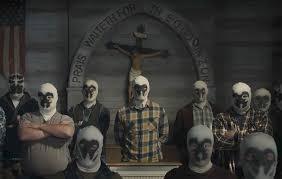
The characters and ideas are solid, however where I feel the show is lacking is with the consistency of its world building. Let’s analyse. This is an alternate history where Nixon used superheroes to extend his term limits, but after the New York attack at the end of the graphic novel, he’s been kicked out in favour of Robert Redford (nice nod to the source material there by the way. lol). As a result, black people got reparations for the racial injustices their ancestors went through and police are now unable to openly carry firearms without special permission from Panda (literally a cop wearing a panda costume). However, after the events of White Night, the government agrees to allow cops to wear masks to protect their identities, hence why quote/unquote ‘superheroes’ like Sister Night and Looking Glass are around despite the existence of the Keene Act. These are, in effect, legal vigilantes. Except already there’s a problem with conflicting messages. I like the idea of masked cops. In the current age of Black Lives Matter and police accountability, it makes sense and could be interesting to explore. However this is hindered by the whole ‘no guns’ stuff. Again, not a bad idea. America’s current gun laws are, to put it mildly, woefully inadequate. What if we went the other way? What if not only was it near impossible to own a gun, cops couldn’t even use a taser without special permission. Both ideas could work... but not at the same time.
Cops being allowed to wear masks creates the effect of empowering them through anonymity, and runs the risk of officers overstepping the mark and normal citizens being unable to hold them to account. But on the other hand, we’ve also got cops whose lives are constantly at risk and who are hindered in their duties by an overprotective nanny state, which effectively depowers them. So... which is it? It can’t be both. I like the scene where Panda reads the law about how the use of firearms can only be permitted in extreme circumstances, and everyone just angrily shouts him down because it tells us how the police feel about this new system. The fact that they’ve made one cop the sole arbiter of these new restrictions and forced him to dress like some ridiculous furry demonstrates the sheer amount of disdain they have towards this policy. But having said that, with the masks on, they have the power and freedom to break into people’s caravans and basically kidnap and assault them without consequence anyway. So what the fuck are they complaining about? It just doesn’t gel together. Either have it that the rules and regulations of the police are the same as our world except that cops can wear masks now, which has led to an increasing problem of police brutality and corruption, or have it that the police are being too heavily restricted and so a few have chosen to turn toward more ‘unorthodox’ methods of crime fighting out of frustration. Pick one and go with it.
Then there’s the Seventh Kavalry. Again, not a bad idea. In fact I love it. A white supremacist cult that’s taken Rorschach’s journal as gospel and have banded together out of a fear of being sidelined in a more liberal world. Very relevant and very interesting. Except... well... there’s not an awful lot to it, is there? In the original graphic novel, there was no clear bad guy. Ozymandias believed he was doing the ultimate good by killing millions of people to save the world, and everyone reluctantly went along with it. It was morally complicated. This, not so much. They’re unambiguously evil. The end. So what? What is there to discuss? It just feels lacking compared to the graphic novel and it runs the risk of creating a conflict that’s too clear cut. Obviously we’re going to end up siding with the cops, regardless of what they do, because the alternative is objectively bad. Hopefully Lindelof is going somewhere with this, but I’d be remiss if I didn’t say I was slightly concerned.
So on the whole, would I say I enjoyed this first episode? Well... I’d say I did, but with reservations. There’s some good characters and ideas that could be interesting to explore and develop, but its execution feels a little shaky in places. Hopefully the episodes to come will offer further clarity.
#it's summer and we're running out of ice#watchmen#watchmen hbo#damon lindelof#dc#hbo#review#spoilers
23 notes
·
View notes
Photo

Péguy
Hi everybody!
In this news feed I've told you a few times about a project I named Péguy. Well today I dedicate a complete article to it to present it to you in more detail but also to show you the new features I brought to it at the beginning of the winter.
It's not the priority project (right now it's TGCM Comics) but I needed a little break during the holidays and coding vector graphics and 3D, it's a little bit addictive like playing Lego. x)
Let's go then!
Péguy, what is it?
It is a procedural generator of patterns, graphic effects and other scenery elements to speed up the realization of my drawings for my comics.
Basically, I enter a few parameters, click on a button, and my program generates a more or less regular pattern on its own.
The first lines of code were written in 2018 and since then, this tool has been constantly being enriched and helping me to work faster on my comics. :D
This project is coded with web languages and generates vector patterns in the format SVG.
In the beginning it was just small scripts that had to be modified directly to change the parameters and run individually for each effect or pattern generated.


Not very user friendly, is it? :’D
This first version was used on episode 2 of Dragon Cat's Galaxia 1/2.
During 2019 I thought it would be more practical to gather all these scripts and integrate them into a graphical user interface. Since then, I have enriched it with new features and improved its ergonomics to save more and more time.
Here is a small sample of what can be produced with Péguy currently.


Graphic effects typical of manga and paving patterns in perspective or plated on a cylinder.
All these features were used on Tarkhan and Gonakin.
I plan to put this project online, but in order for it to be usable by others than me, I still need to fix a few ergonomy issues.
For the moment, to recover the rendering, you still need to open the browser debugger to find and copy the HTML node that contains the SVG.
In other words, if you don't know the HTML structure by heart, it's not practical. 8D
A 3D module!
The 2020 new feature is that I started to develop a 3D module. The idea, in the long run, is to be able to build my comics backgrounds, at least the architectural ones, a bit like a Lego game.
The interface is really still under development, a lot of things are missing, but basically it's going to look like this.

So there's no shortage of 3D modeling software, so why am I making one? What will make my project stand out from what already exists?
First, navigation around the 3D workspace. In short, the movement of the camera.
Well please excuse me, but in Blender, Maya, Sketchup and so on, to be able to frame according to your needs to get a rendering, it's just a pain in the ass!
So I developed a more practical camera navigation system depending on whether you're modeling an object or placing it in a map. The idea is to take inspiration from the map editors in some video games (like Age of Empire).
Secondly, I'm going to propose a small innovation. When you model an object in Blender or something else, it will always be frozen and if you use it several times in an environment, it will be strictly identical, which can be annoying for natural elements like trees for example. So I'm going to develop a kind of little "language" that will allow you to make an object customizable and incorporate random components. Thus, with a single definition for an object, we can obtain an infinite number of different instances, with random components for natural elements and variables such as the number of floors for a building.
I had already developed a prototype of this system many years ago in Java. I'm going to retrieve it and adapt it to Javascript.
And the last peculiarity will be in the proposed renderings. As this is about making comics (especially in black and white in my case), I'm developing a whole bunch of shaders to generate lines, screentones and other hatchings automatically with the possibility to use patterns generated in the existing vector module as textures! :D


What are shaders?
Well, you see the principle of post-production in cinema... (Editing, sound effects, various corrections, special effects... all the finishing work after shooting).
Well, shaders are about the same principle. They are programs executed just after the calculation of the 3D object as it should appear on the screen. They allow to apply patches, deformations, effects, filters... As long as you are not angry with mathematics, there is only limit to your imagination! :D
When you enter a normal vector in a color variable it gives funny results.

Yes! It's really with math that you can display all these things. :D
Now when you hear a smart guy tell you that math is cold, it's the opposite of art or incompatible with art... it's dry toast, you'll know it's ignorance. :p
Math is a tool just like the brush, it's all about knowing how to use it. :D
In truth, science is a representation of reality in the same way as a painting. It is photorealistic in the extreme, but it is nevertheless a human construction used to describe nature.
It remains an approximation of reality that continually escapes us and we try to fill in the margins of error over the centuries... Just like classical painting did.
But by the way? Aren't there a bunch of great painters who were also scholars, mathematicians? Yes, there are! Look hard! The Renaissance is a good breeding ground. x)
In short! Physics is a painting and mathematics is its brush.
But in painting, we don't only do figurative, not only realism, we can give free rein to our inspiration to stylize our representation of the world or make it abstract.
Well like any good brush, mathematics allows the same fantasy! All it takes is a little imagination for that.
Hold, for example, the good old Spirograph from our childhood. We all had one! Well, these pretty patterns drawn with the bic are nothing else than... parametric equations that make the students of math sup/math spe suffer. 8D
Even the famous celtic triskelion can be calculated from parametric equations.
Well, I digress, I digress, but let's get back to our shaders.
Since you can do whatever you want with it, I worked on typical manga effects. By combining the Dot Pattern Generator and the Hatch Generator but display them in white, I was able to simulate a scratch effect on screentones.

In the traditional way it is an effect that is obtained by scraping the screentones with a cutter or similar tool.
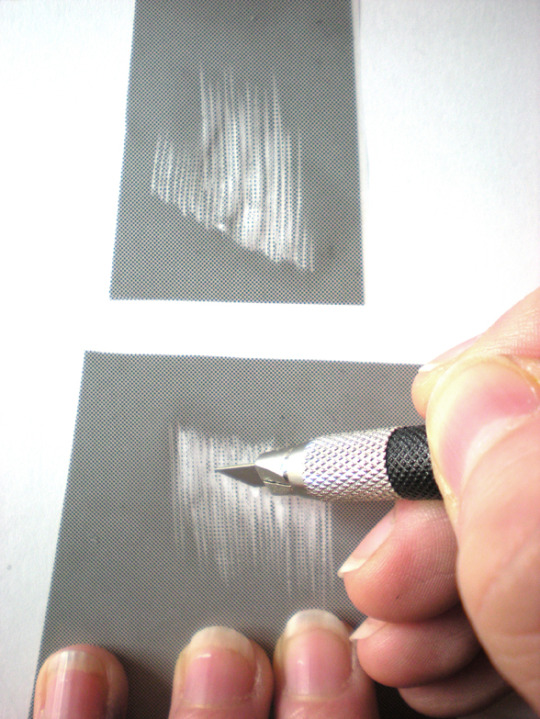
Péguy will therefore be able to calculate this effect alone on a 3D scene. :D
I extended this effect with a pattern calculated in SVG. So it will be possible to use the patterns created in the vector module as textures for the 3D module!
Here it is a pattern of dots distributed according to a Fibonacci spiral (I used a similar pattern in Tarkhan to make stone textures, very commonly used in manga).

Bump mapping
So this is where things get really interesting. We stay in the shaders but we're going to give an extra dimension to our rendering.
Basically, bump mapping consists in creating a bas-relief effect from a high map. And it gives this kind of result.

The defined object is always a simple cylinder (with 2 radii). It is the shaders that apply the pixel shift and recalculate the lighting thanks to the high map that looks like this.

This texture has also been calculated automatically in SVG. Thus we can dynamically set the number of bricks.
Well, this bas-relief story is very nice, but here we have a relatively realistic lighting, and we would like it to look like a drawing.
So by applying a threshold to have an area lit in white, a second threshold to have shadow areas in black, by applying the screentone pattern to the rest and by adding the hatching that simulates the scraped screentone, here is the result!

It's like a manga from the 80's! :D
I tested this rendering with other screentone patterns: Fibonnacci spiral dots, parallel lines or lines that follow the shape of the object.



Now we know what Péguy can do.
I think I can enrich this rendering a bit more with the shaders but the next time I work on this project the biggest part of the job will be to create what we call primitives, basic geometric objects.
After that I can start assembling them.
The concept of drawing while coding is so much fun that I'm starting to think about trying to make complete illustrations like this or making the backgrounds for some comic book projects only with Péguy just for the artistic process.
Finding tricks to generate organic objects, especially plants should be fun too.
That's all for today.
Next time we'll talk about drawing!
Have a nice week-end and see you soon! :D
Suisei
P.S. If you want miss no news and if you haven't already done so, you can subscribe to the newsletter here : https://www.suiseipark.com/User/SubscribeNewsletter/language/english/
Source : https://www.suiseipark.com/News/Entry/id/302/
1 note
·
View note